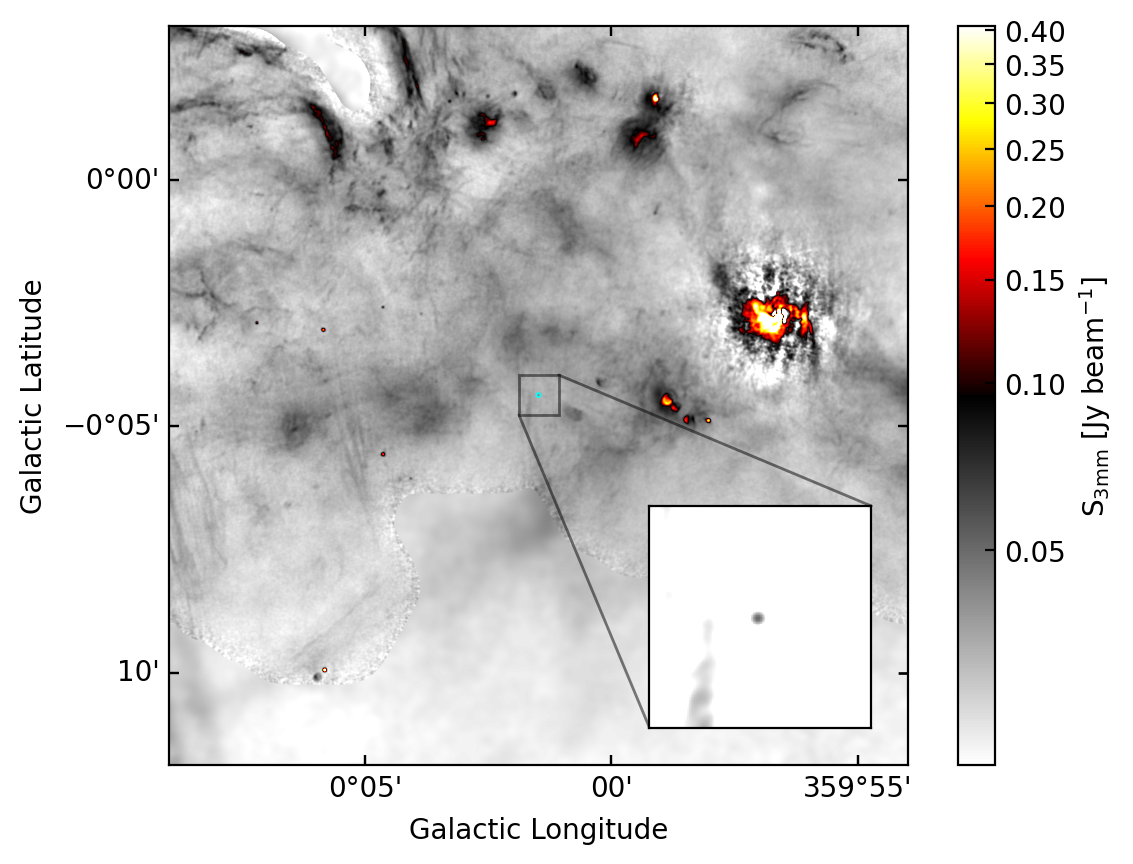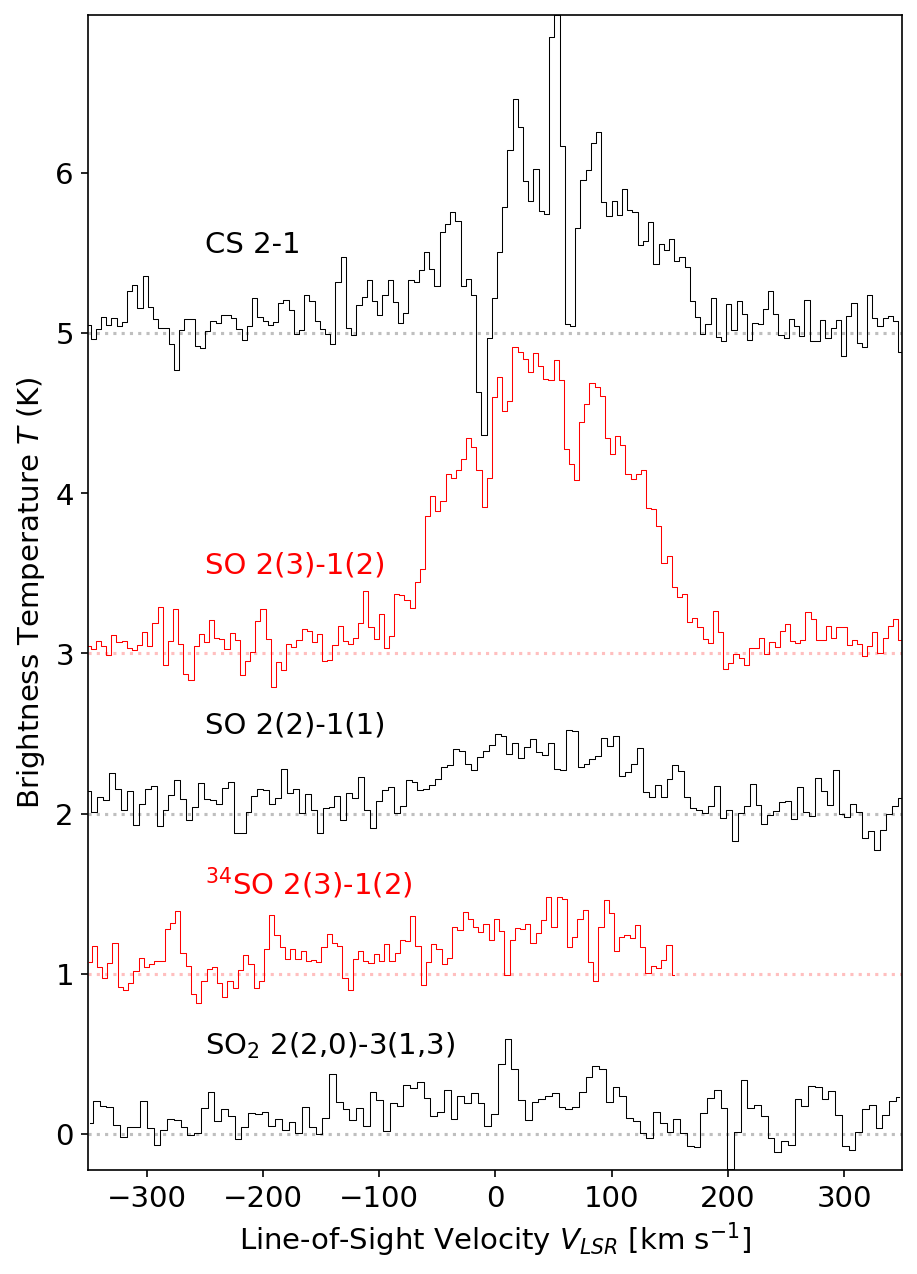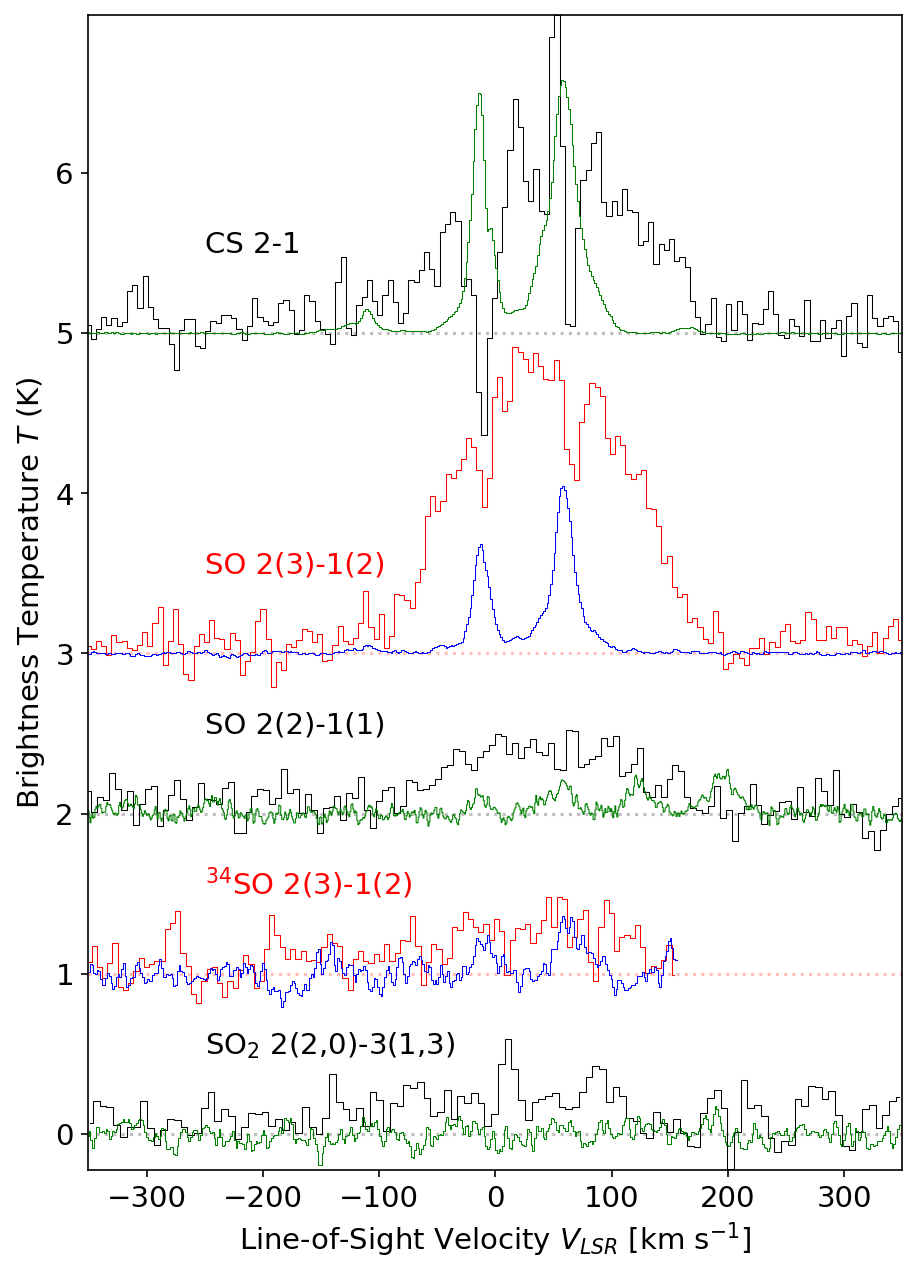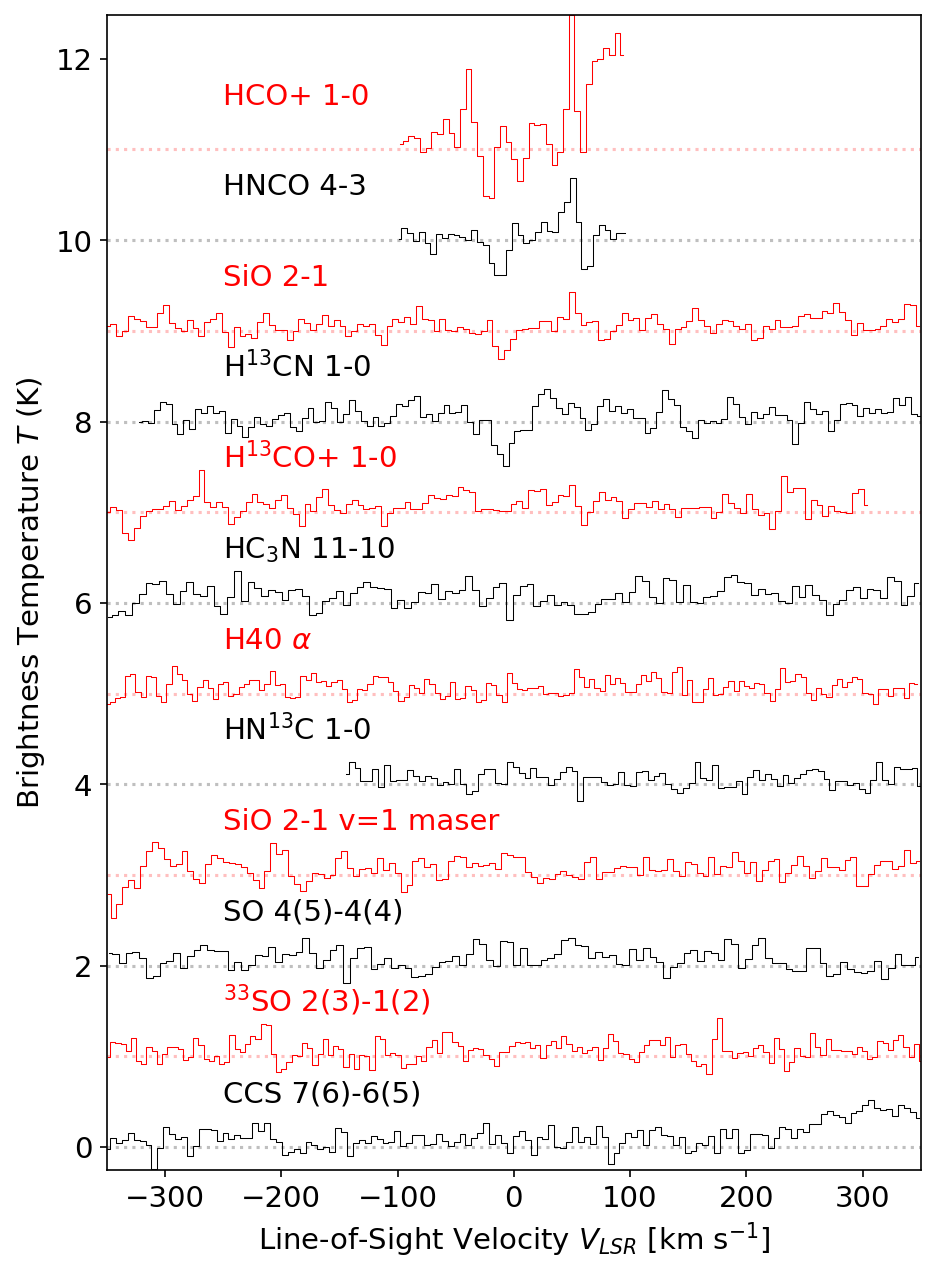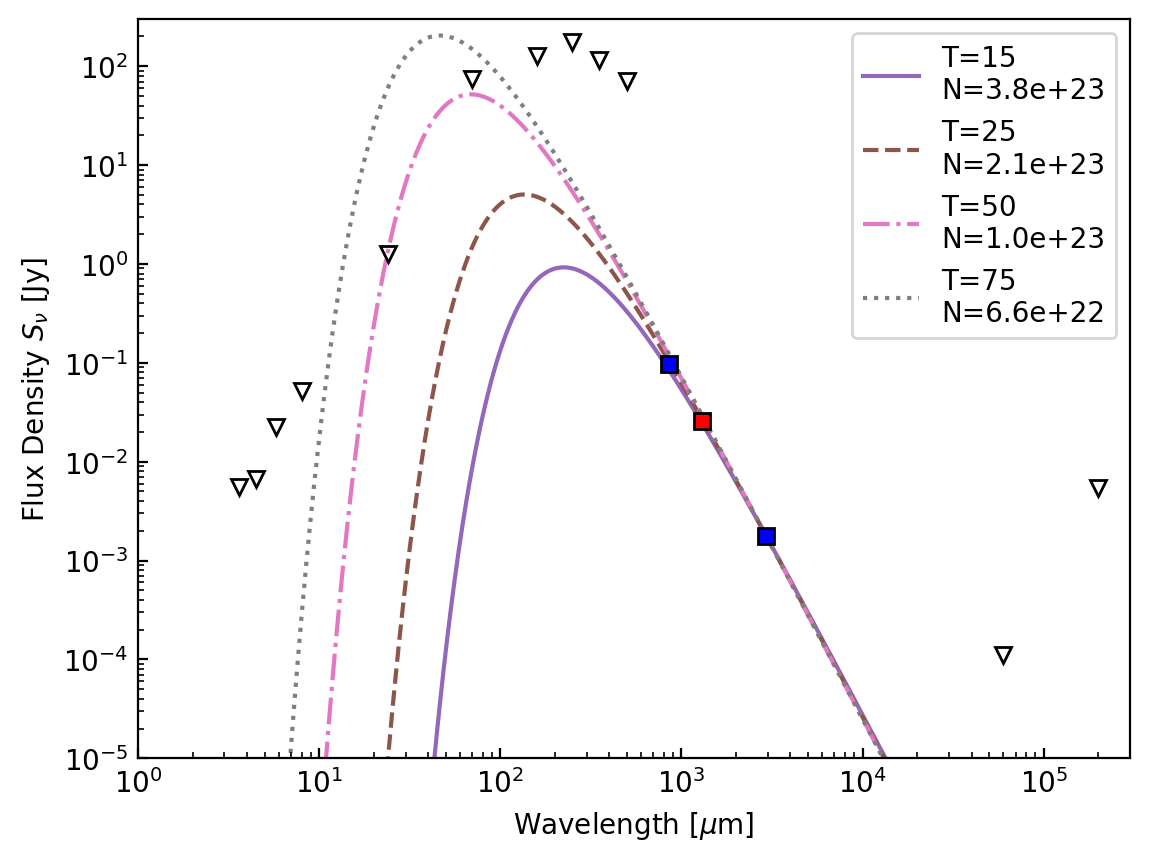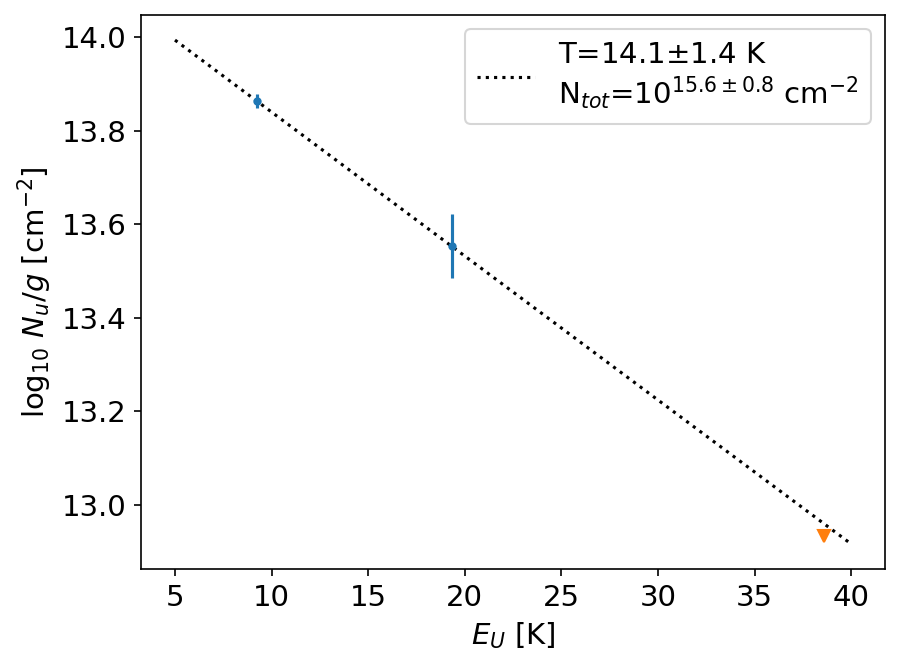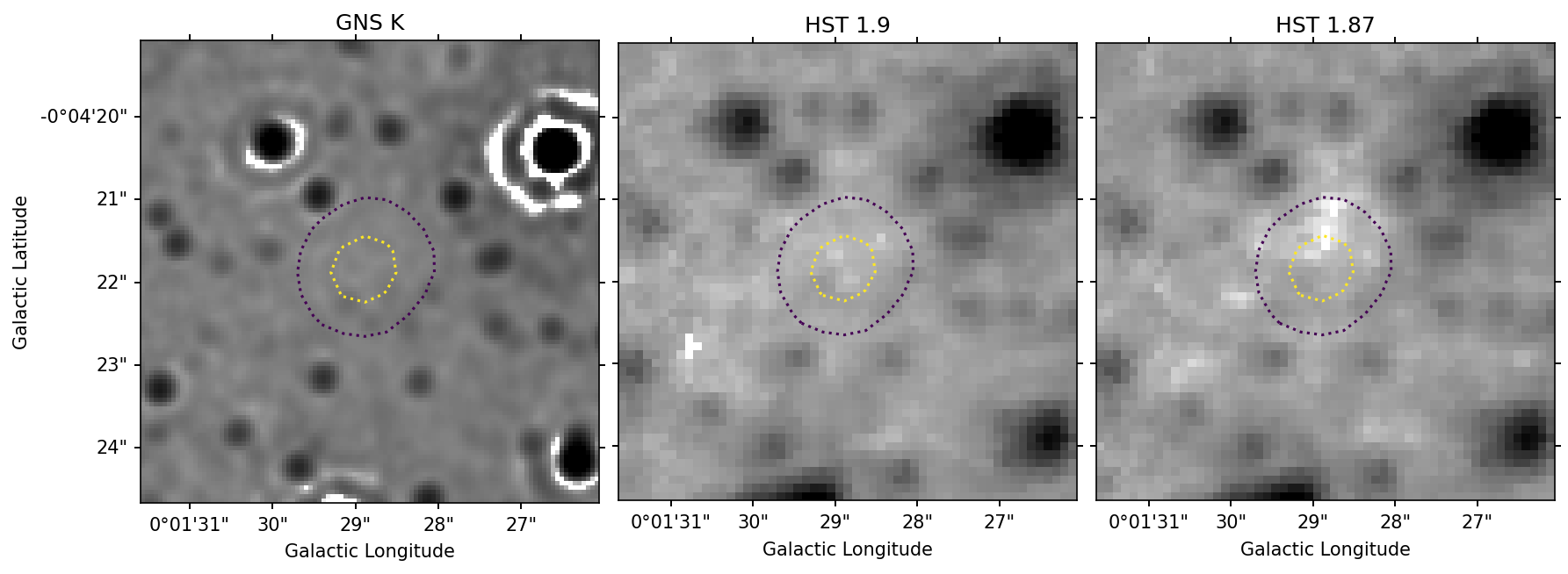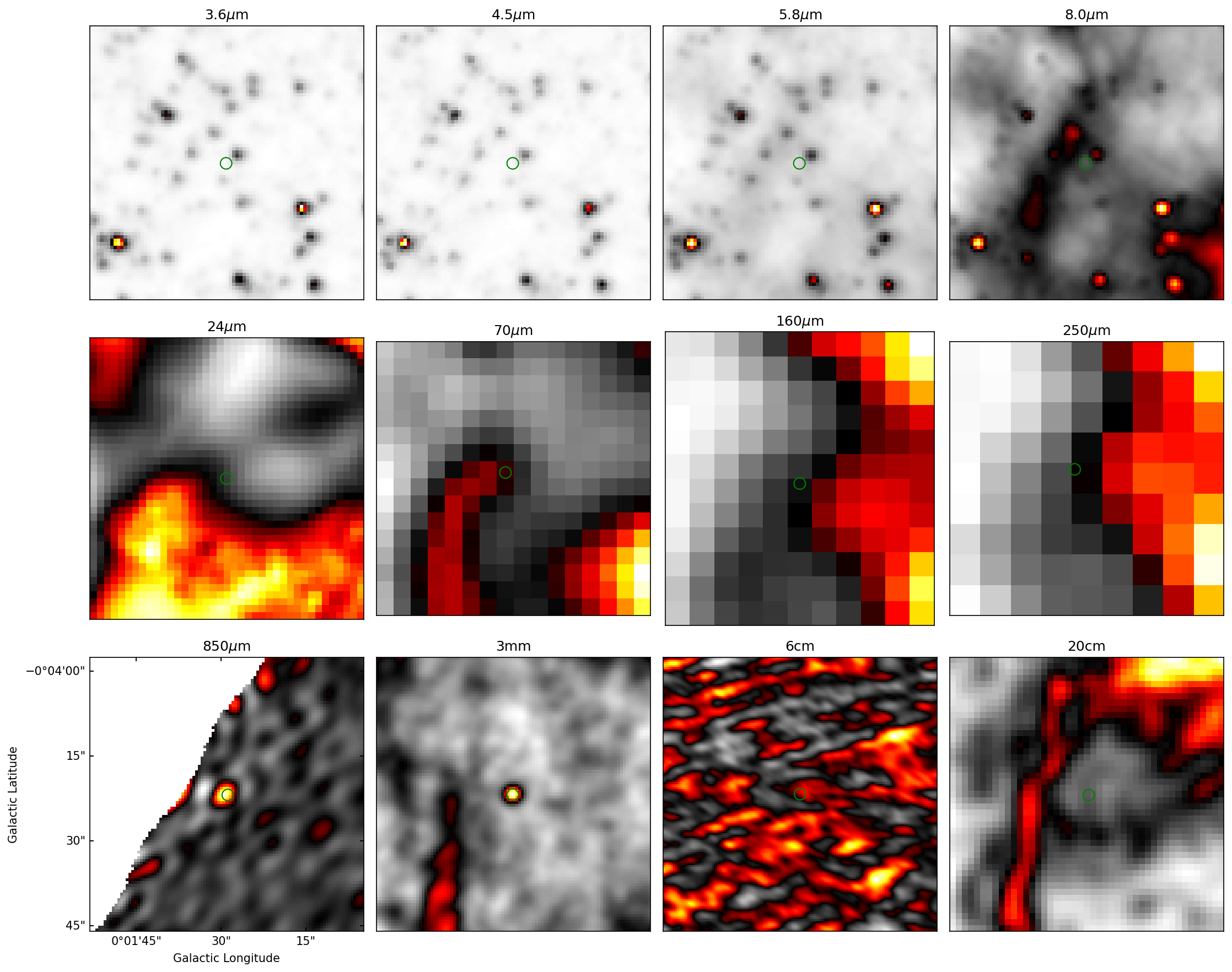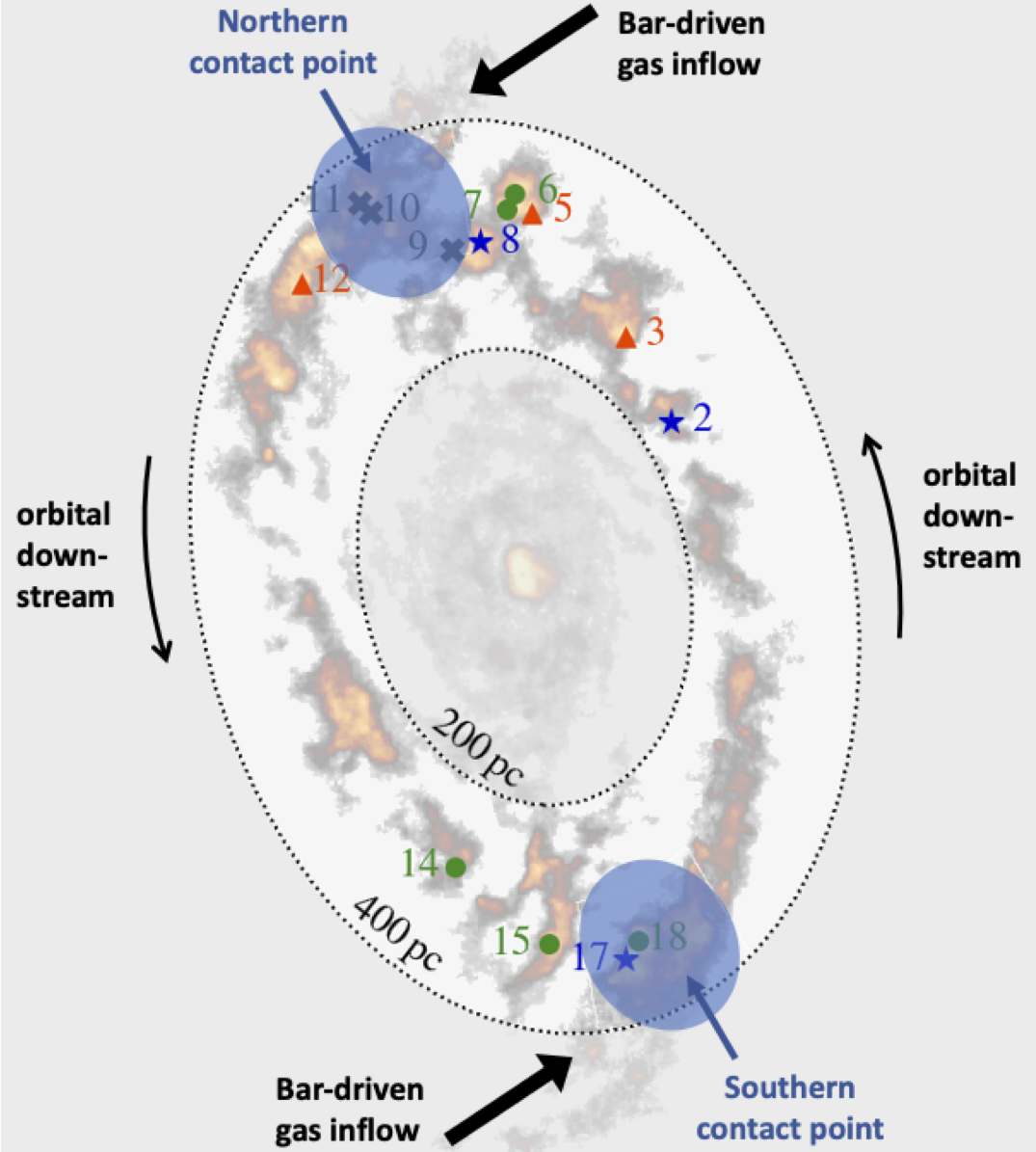- To move slides, use the arrow keys or swipe on your mobile device
- To see the speaker notes, press "s"
- To go to full screen, press "f"
- To print as PDF, go to this URL: ?print-pdf, then print.
- To get a PDF with speaker notes, add ?print-pdf&showNotes=true to the URL.
The Brick is icy and still mostly starless
Adam Ginsburg
University of Florida, Gainesville

Collaborators on this paper:
Ash Barnes, Cara Battersby Alyssa Bulatek, Savannah Gramze, Jonny Henshaw, Desmond Jeff, Xing "Walker" Lu, Betsy Mills, Dan Walker
Supported by the NSF: 2008101, 2206511, CAREER 2142300, STSCI grants 1905, 2221
Slides available at
https://keflavich.github.io/talks/EPOS_2024.html or from my webpage →talks
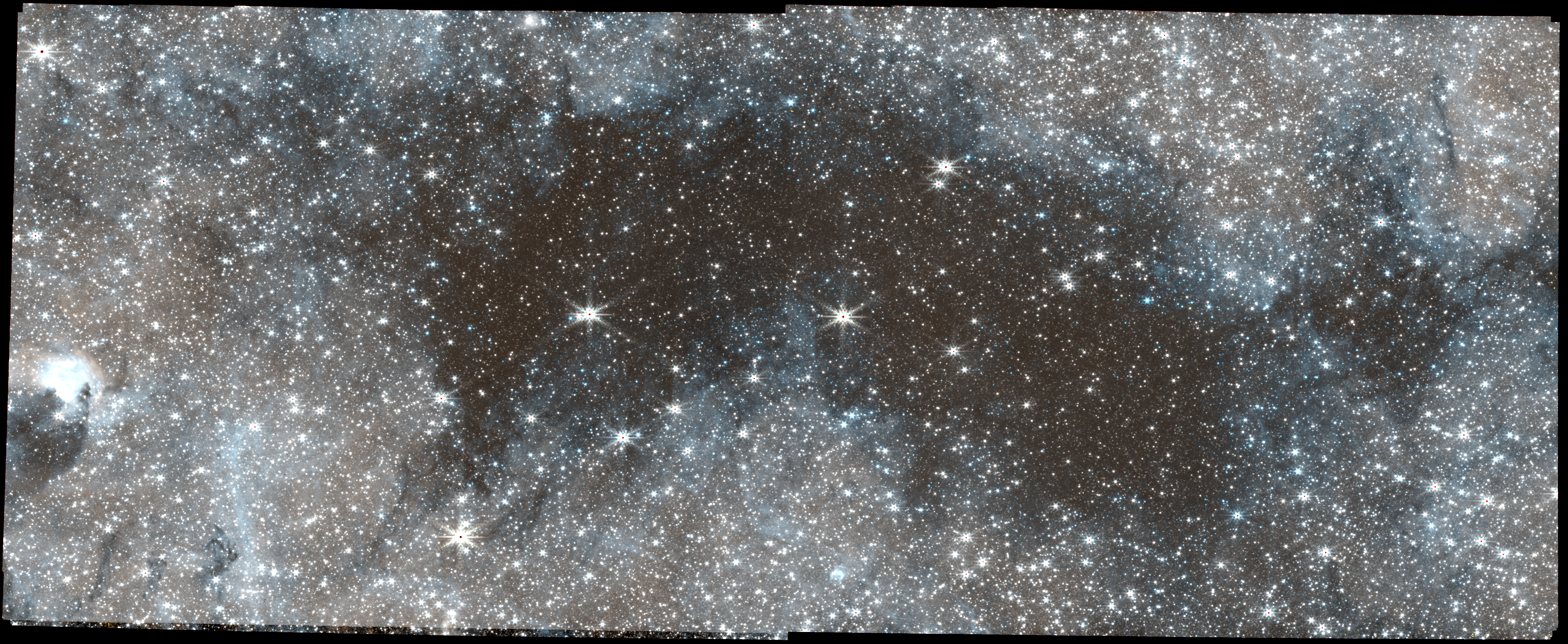
The CMZ is one extreme of star forming conditions in the Galaxy
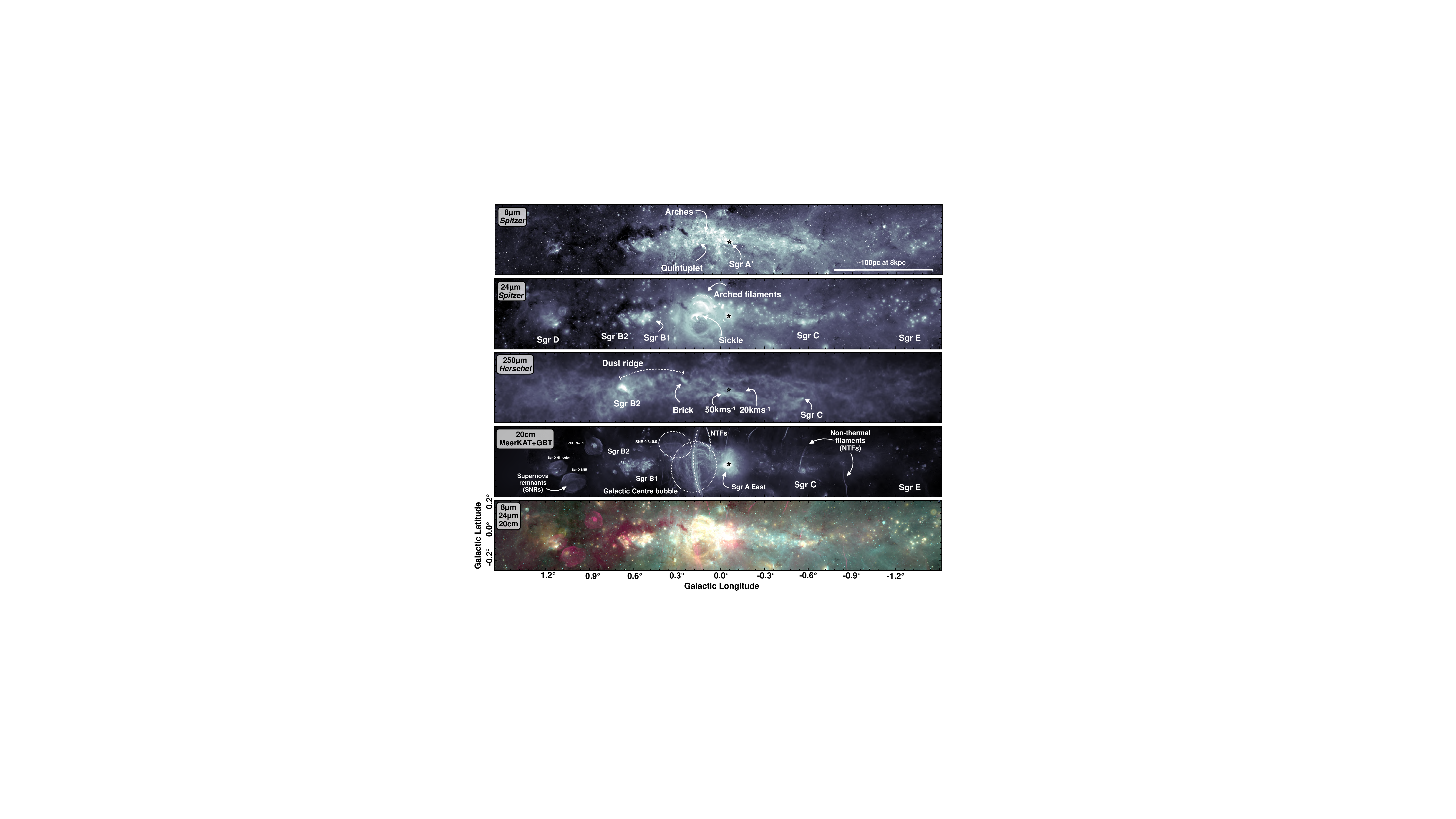
PPVII review: Henshaw, Barnes, Battersby, Ginsburg, Sormani, Walker
MC06
How much do the conditions to form MCs change near the Galactic center compared to the disk, and how much is that reflected in their properties?
A substantial history of papers on star formation and kinematics in the Brick...
(these are just the papers with G0.253 in the title)
- Longmore+ 2012 Herschel, VLT: density, temperature
- Kauffmann+ 2013 SMA, CARMA: Low star-forming potential
- Clark+ 2013 theory: temperature structure
- Rathborne+ 2014, 2015 MOPRA, ALMA: density structure, chemistry
- Johnston+ 2014 SMA, IRAM: temperature, kinematics
- Marsh+ 2016 Herschel: dust temperature
- Federrath+ 2016 theory: turbulence, kinematics
- Henshaw+ 2019 ALMA: kinematic structure
- Walker+ 2021 ALMA: star formation
- Henshaw+ 2022 ALMA, multiwavelength: feedback
- Petkova+ 2023 theory: chemistry
- Ginsburg+ 2023 JWST: ice
- Sofue 2024 Nobeyama: feedback
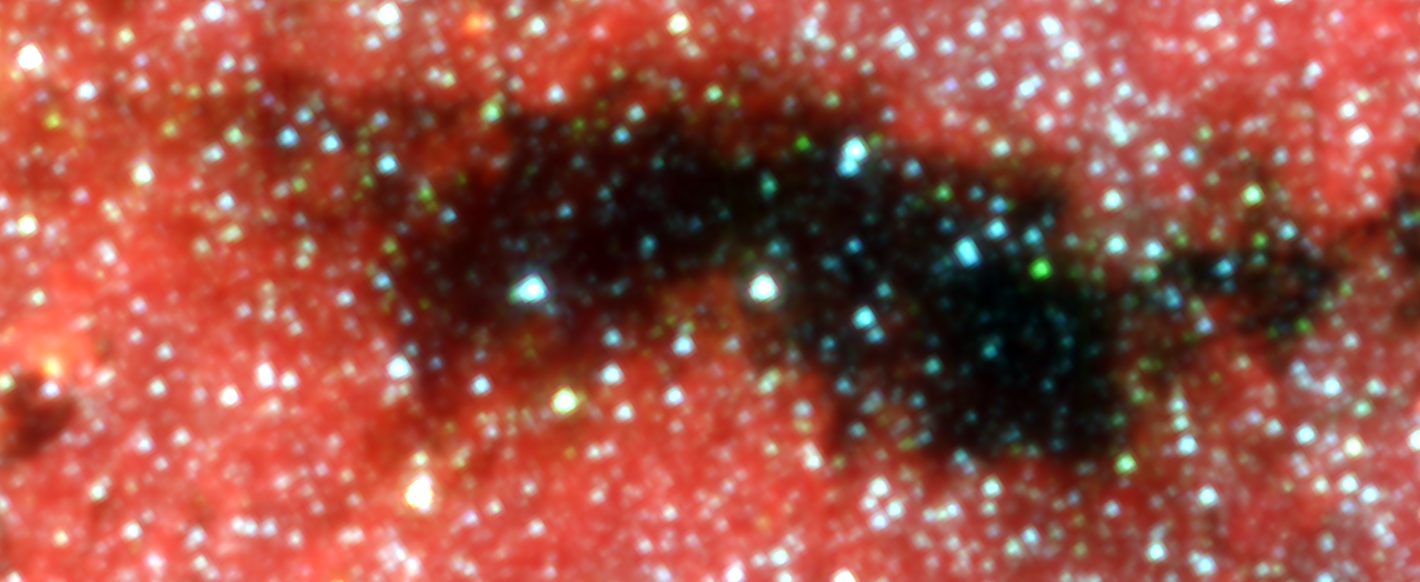

despite a total mass ~105 M⊙ in <3 pc
MC09
How much gas can a dense region in a GMC accumulate before SF starts?
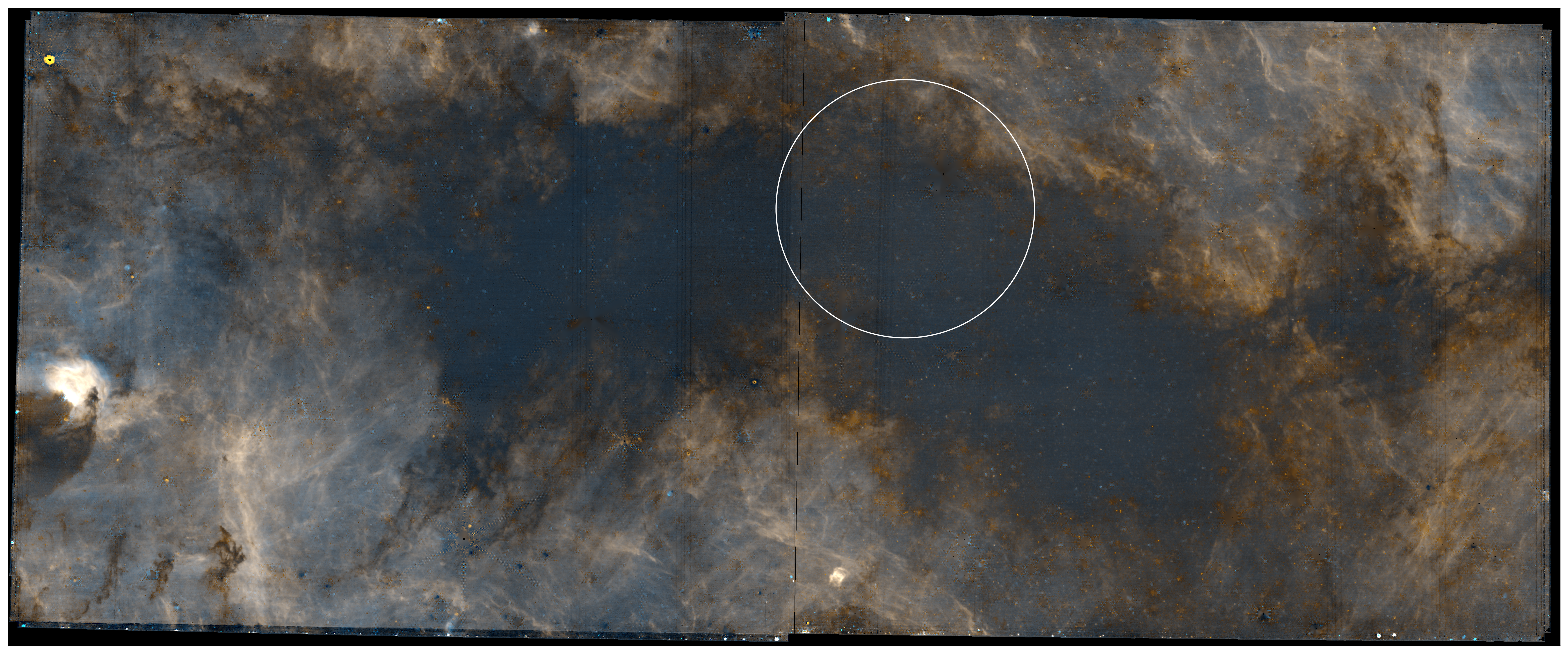
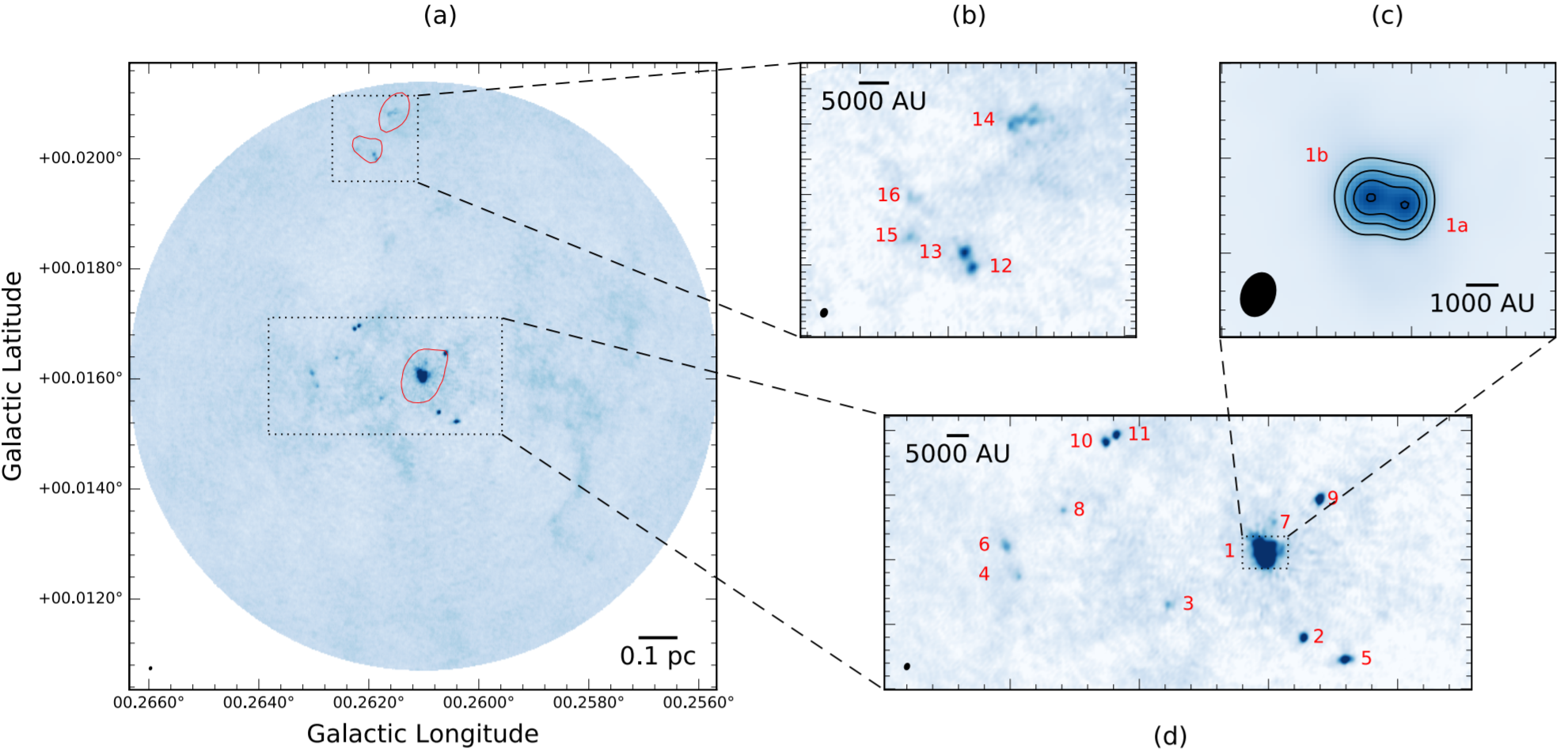
Walker+ 2021
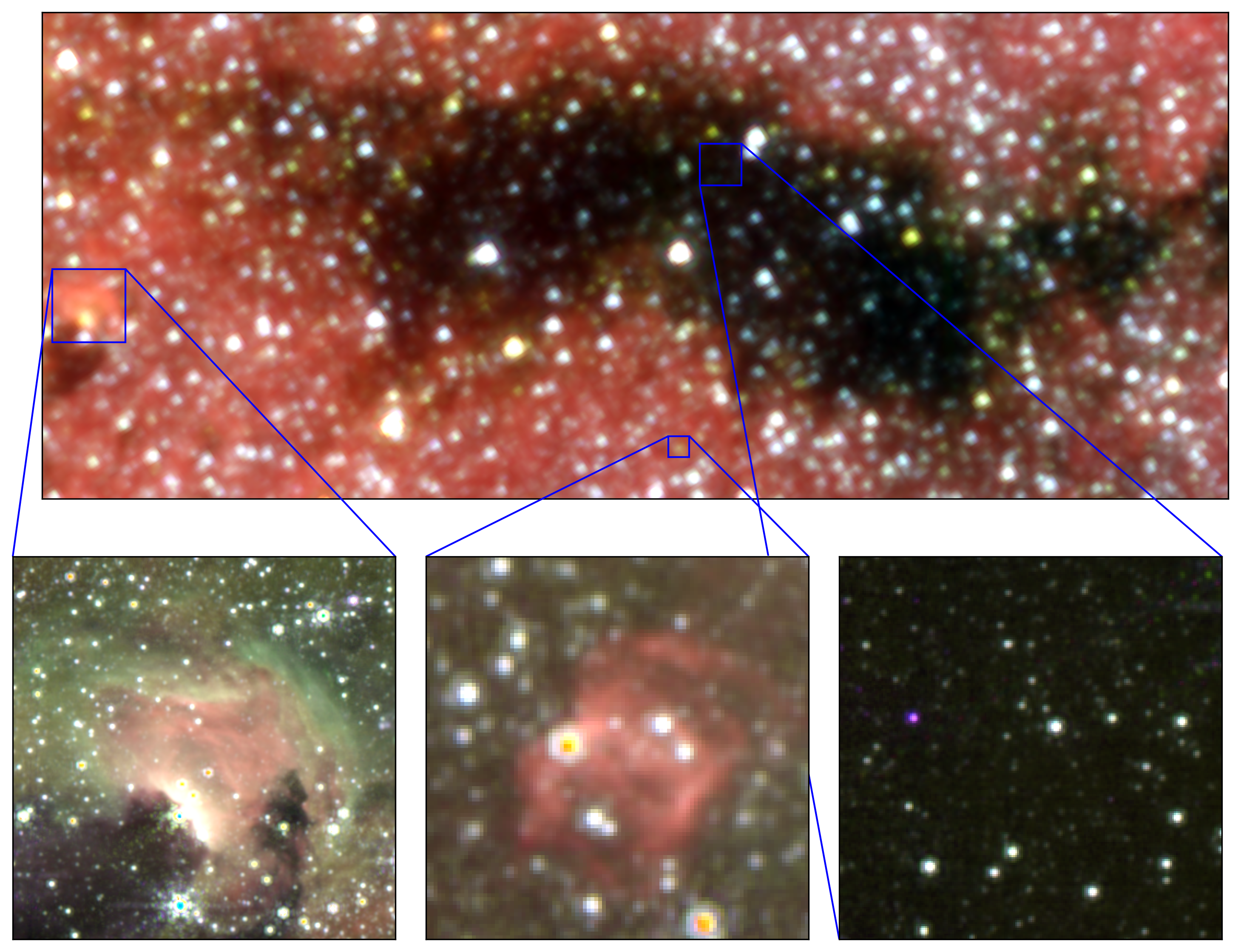
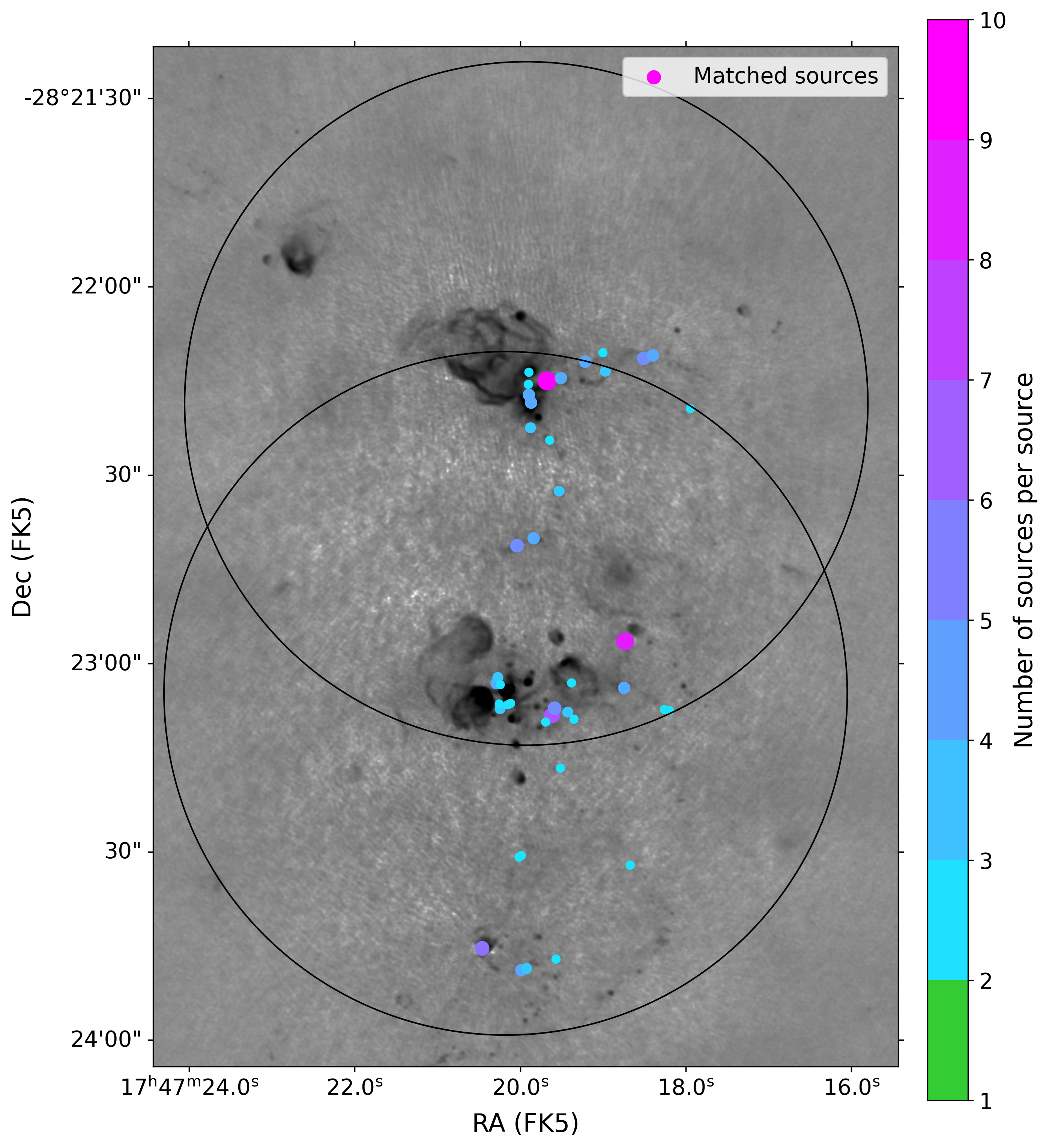


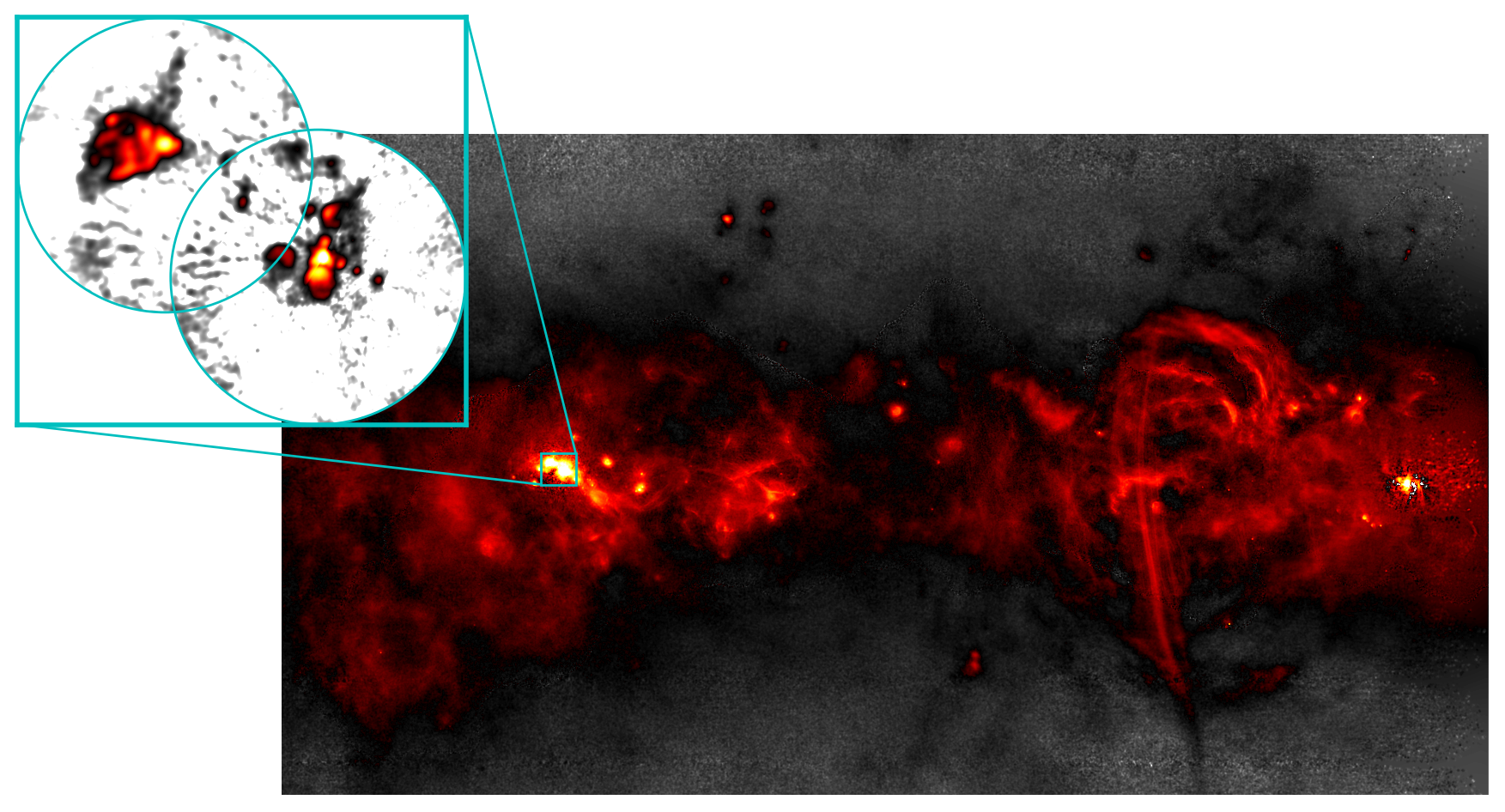
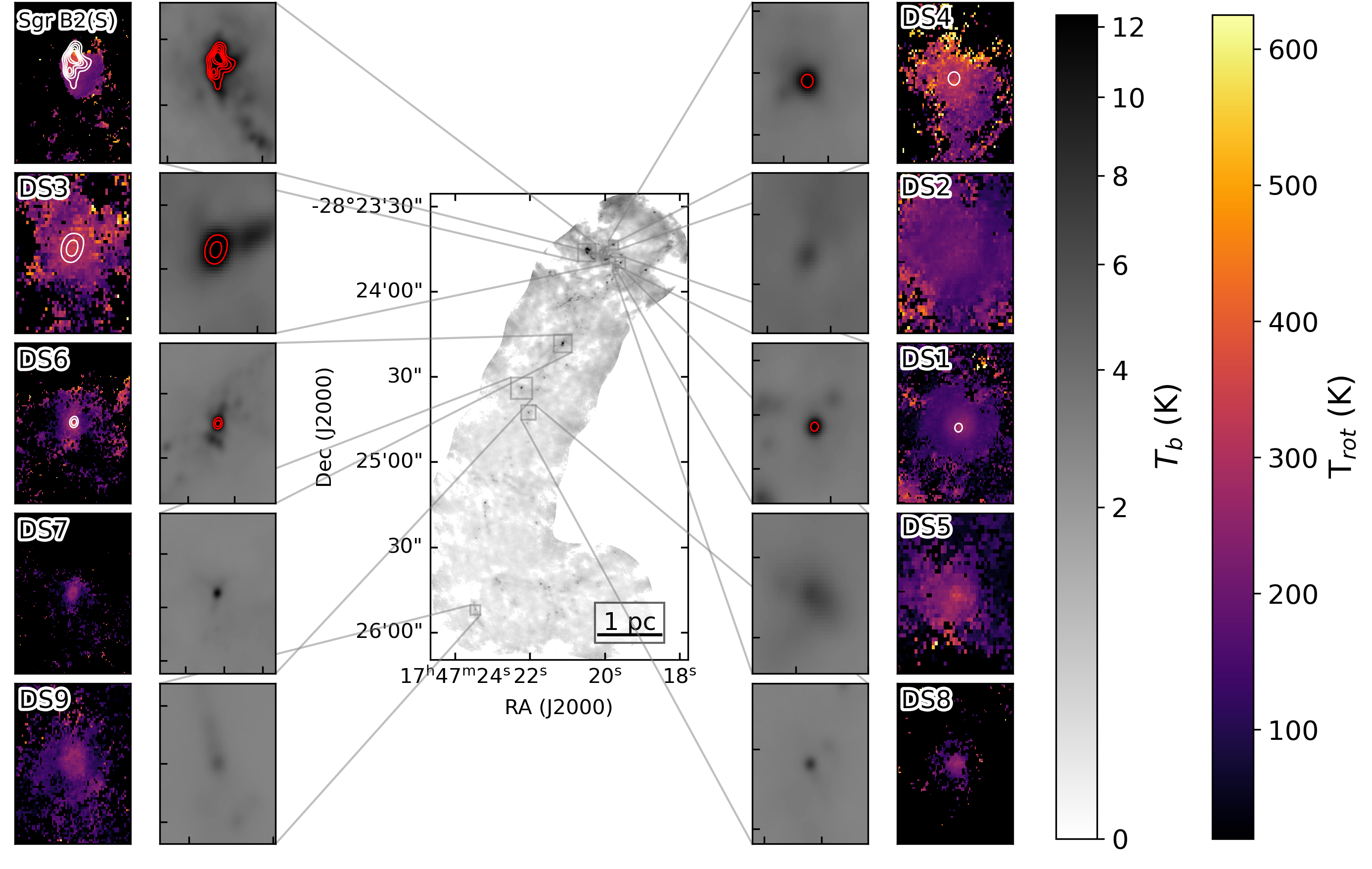
 Desmond Jeff+ 2024
Desmond Jeff+ 2024
Ten hot cores in Sgr B2 DS
outside the massive clusters
TG ~ 200-500 K
M ~ 200 - 2900 M⊙
(proto-O-stars / clusters)
~5% of cores are hot cores
M ~ 200 - 2900 M⊙
(proto-O-stars / clusters)
~5% of cores are hot cores
[P12 Alva Kinman has cataloged 100's more protostars]
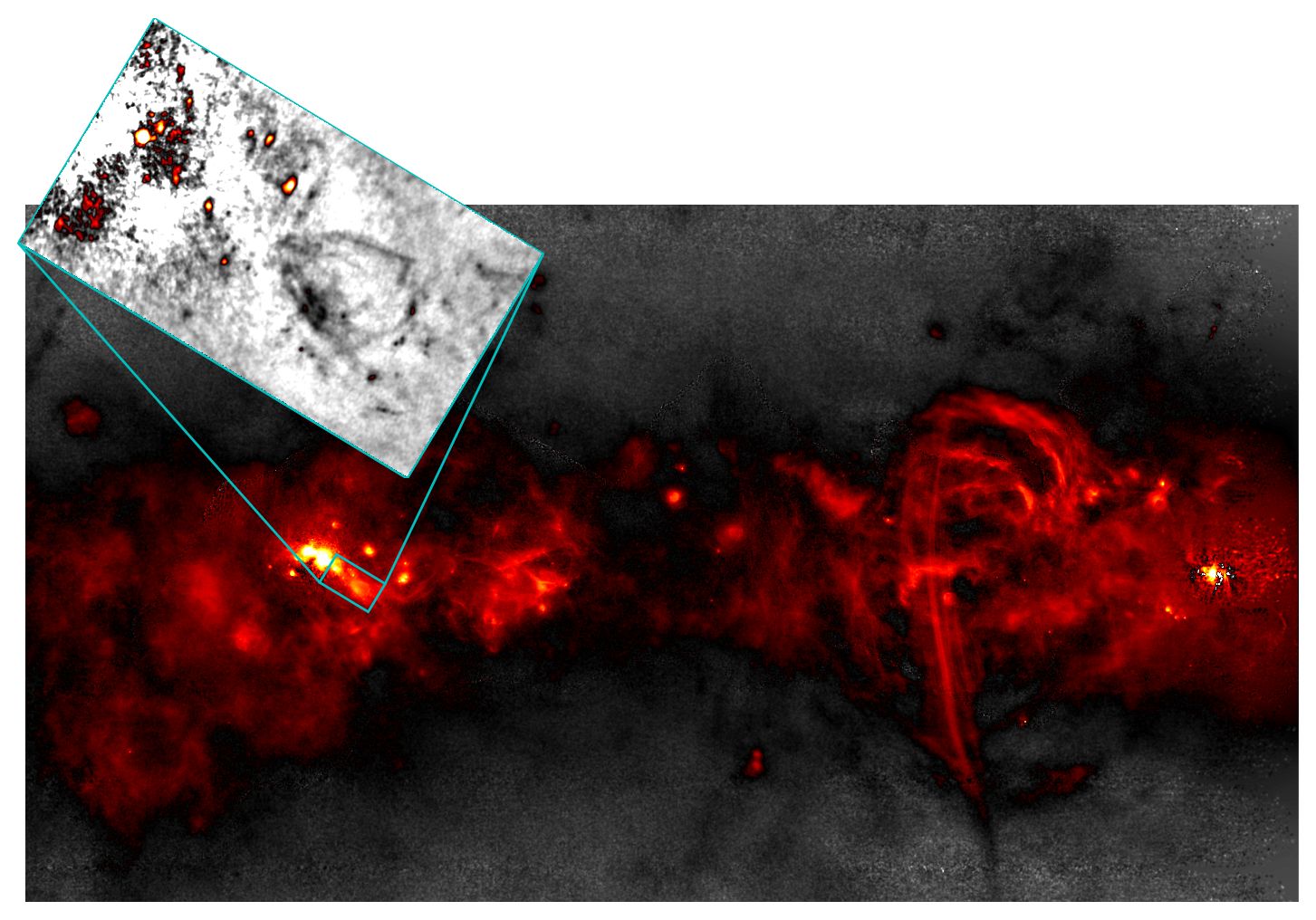
Sgr B2 DS: More massive cores than the Disk
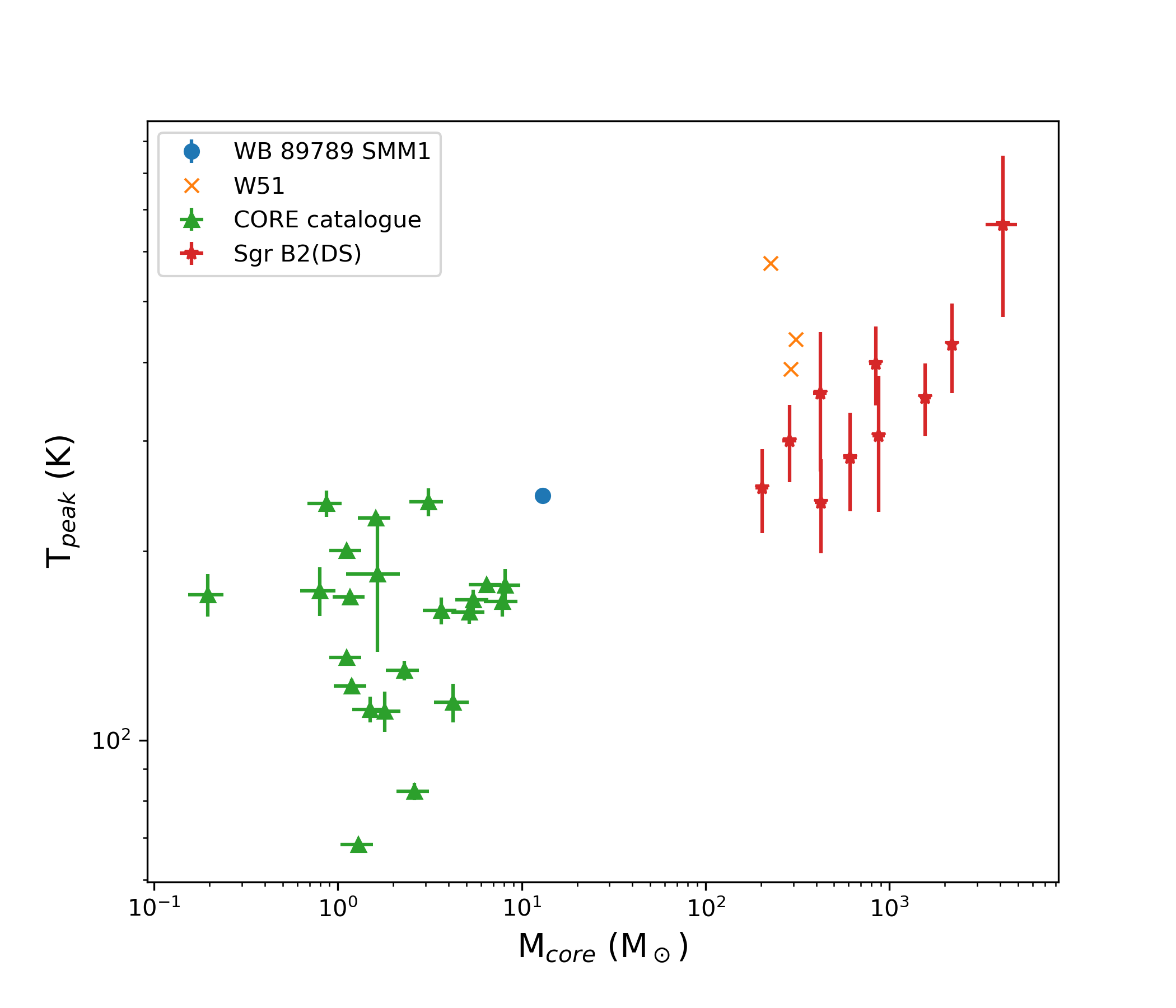
Hot Cores
Hot cores are chemically rich sites of high-mass star formation.
They are only found in the more distant disk & CMZ regions
They are only found in the more distant disk & CMZ regions
Hot Cores
Hot cores are chemically rich sites of high-mass star formation.
They are only found in the more distant disk & CMZ regions
They are only found in the more distant disk & CMZ regions
So is Cloud C
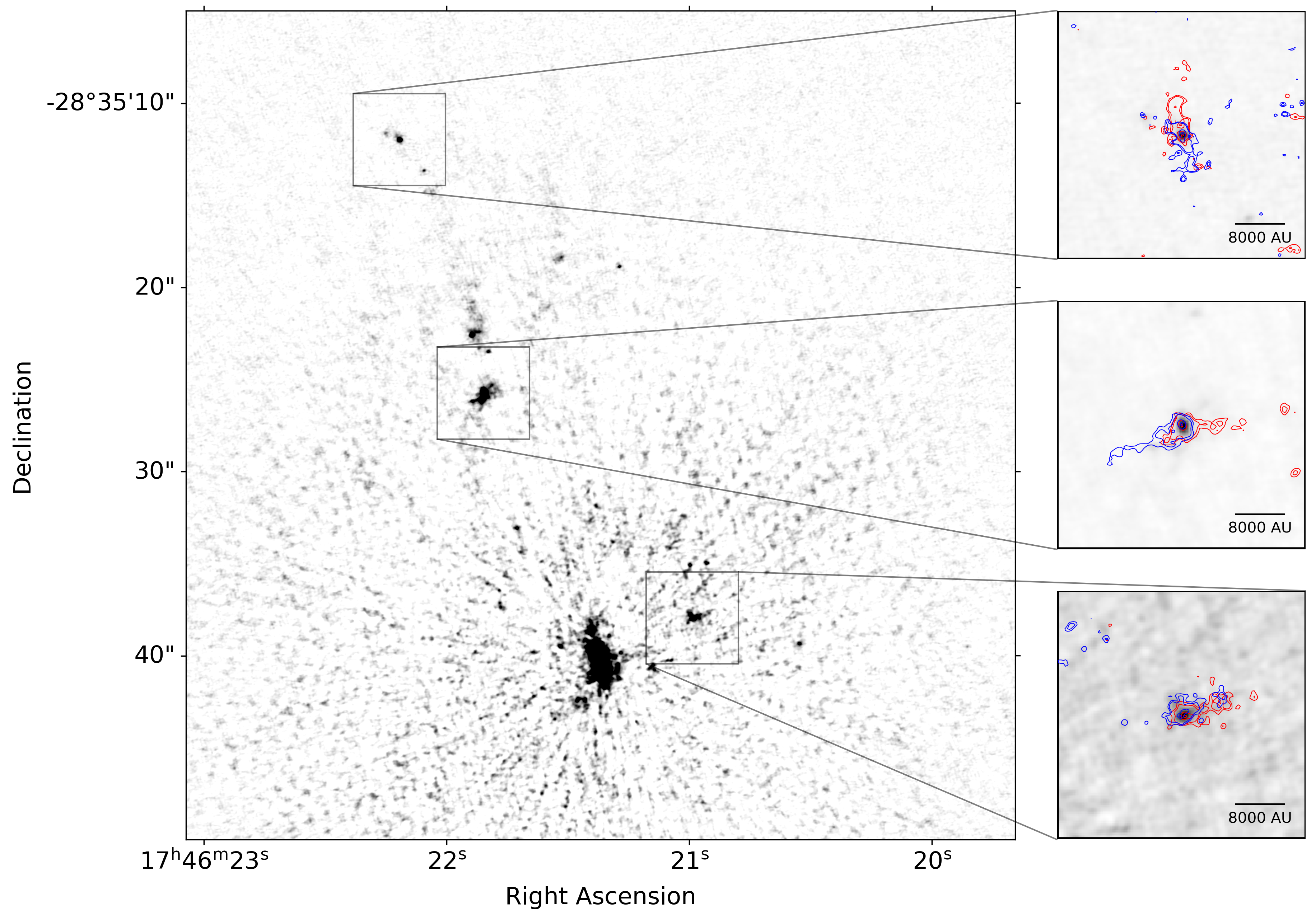
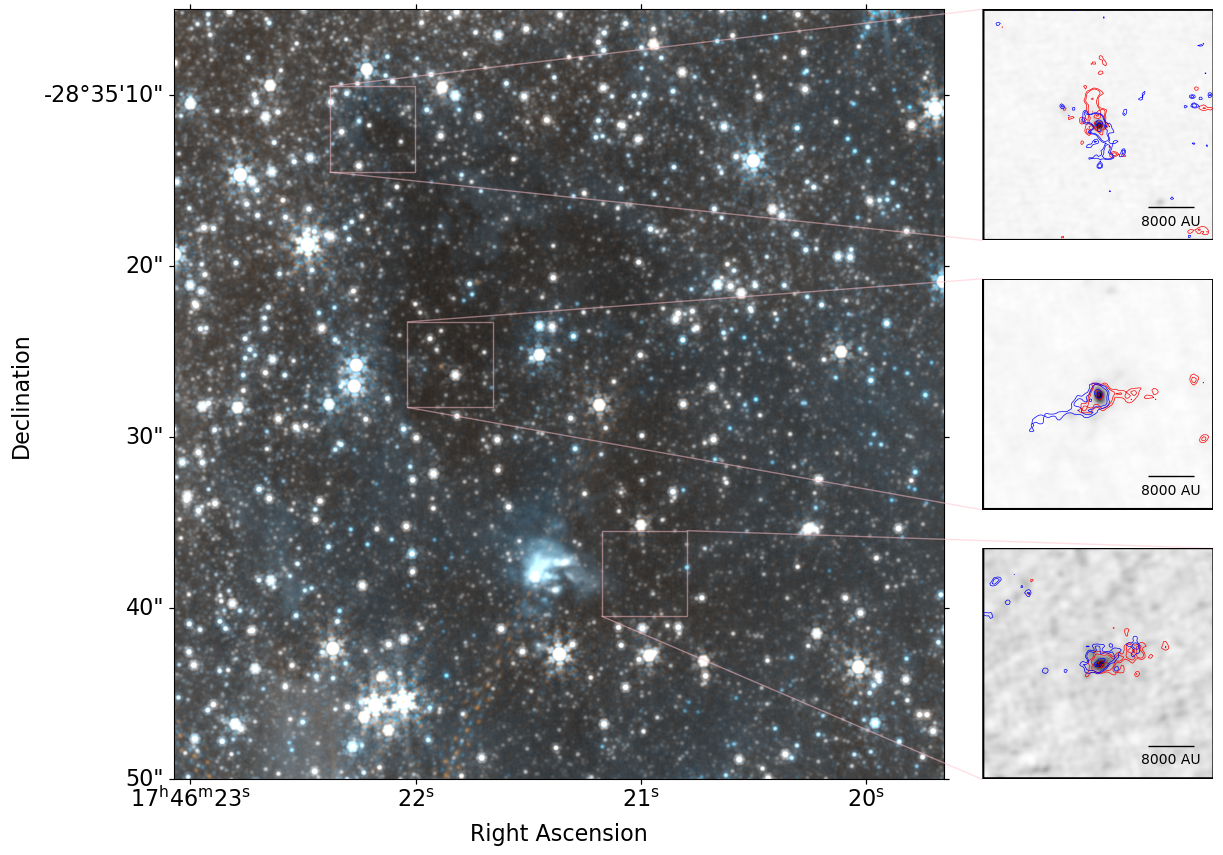

Savannah Gramze

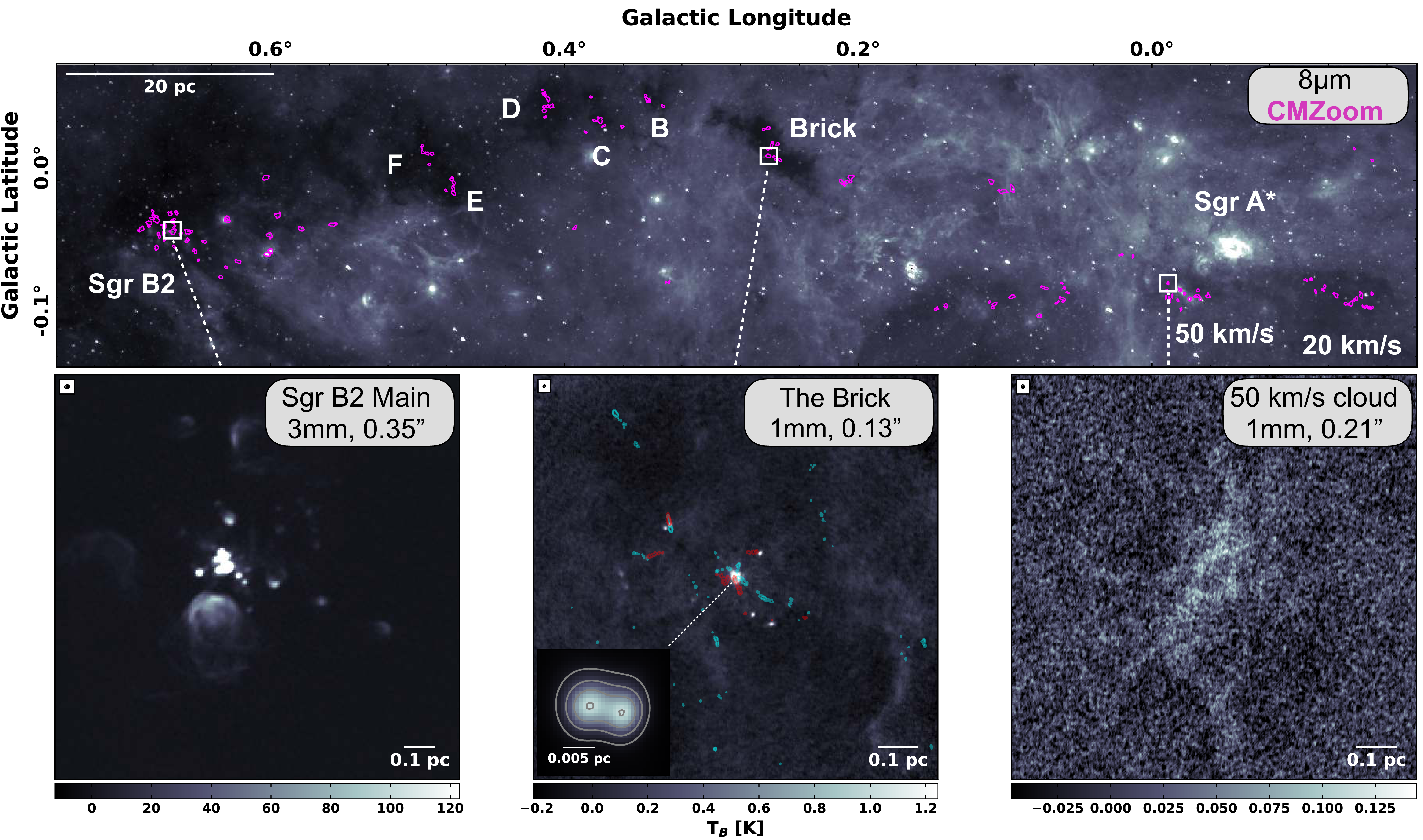 Dust Ridge
Dust Ridge
P08 Houghton E/F, Brick: No/low SF.
Sgr B2, Cloud C: high SF
Sgr B2, Cloud C: high SF
The Brick has lower column density than star-forming Sgr B2
but higher than nearly any cloud in the Galactic plane
Ge14 Is there a global column density limit for SF to start?
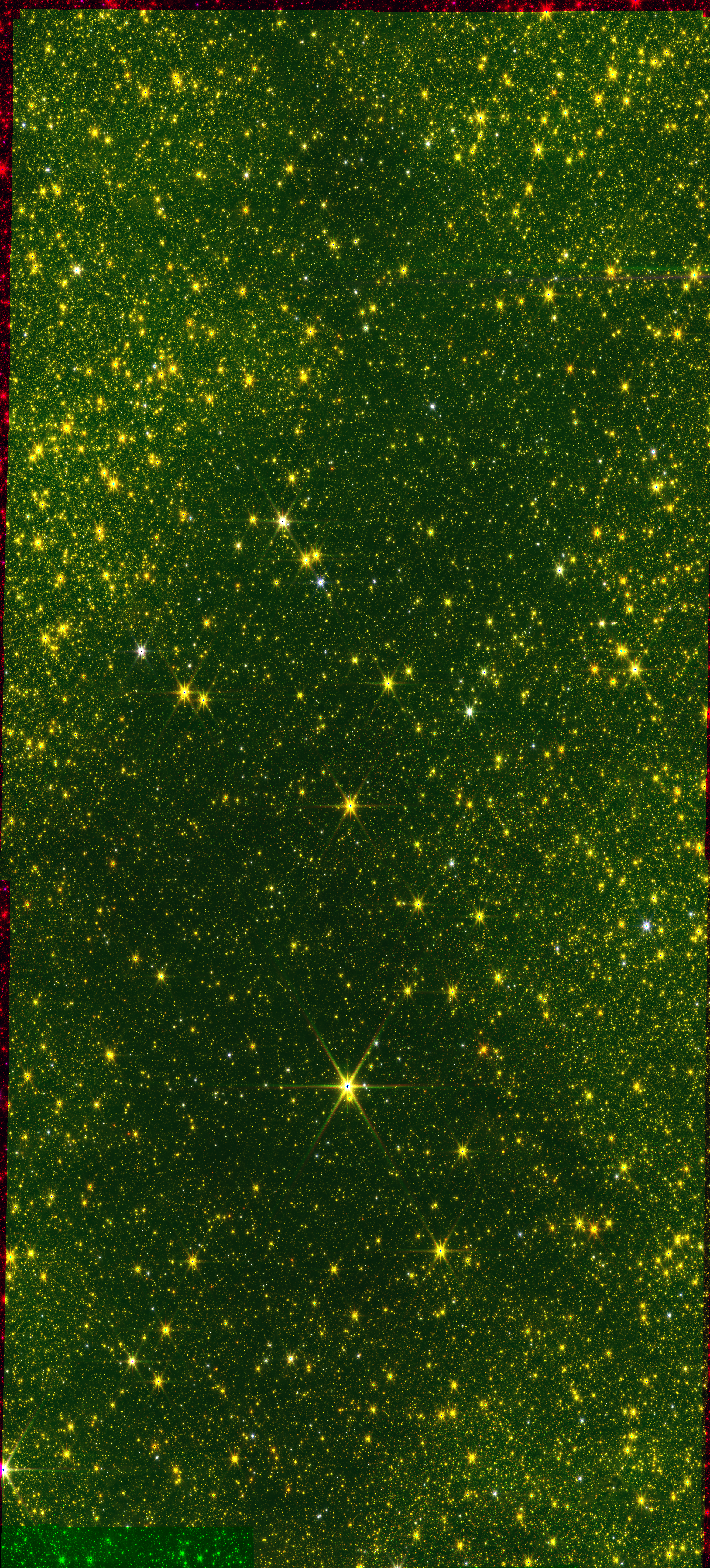
F200W F182M F115W
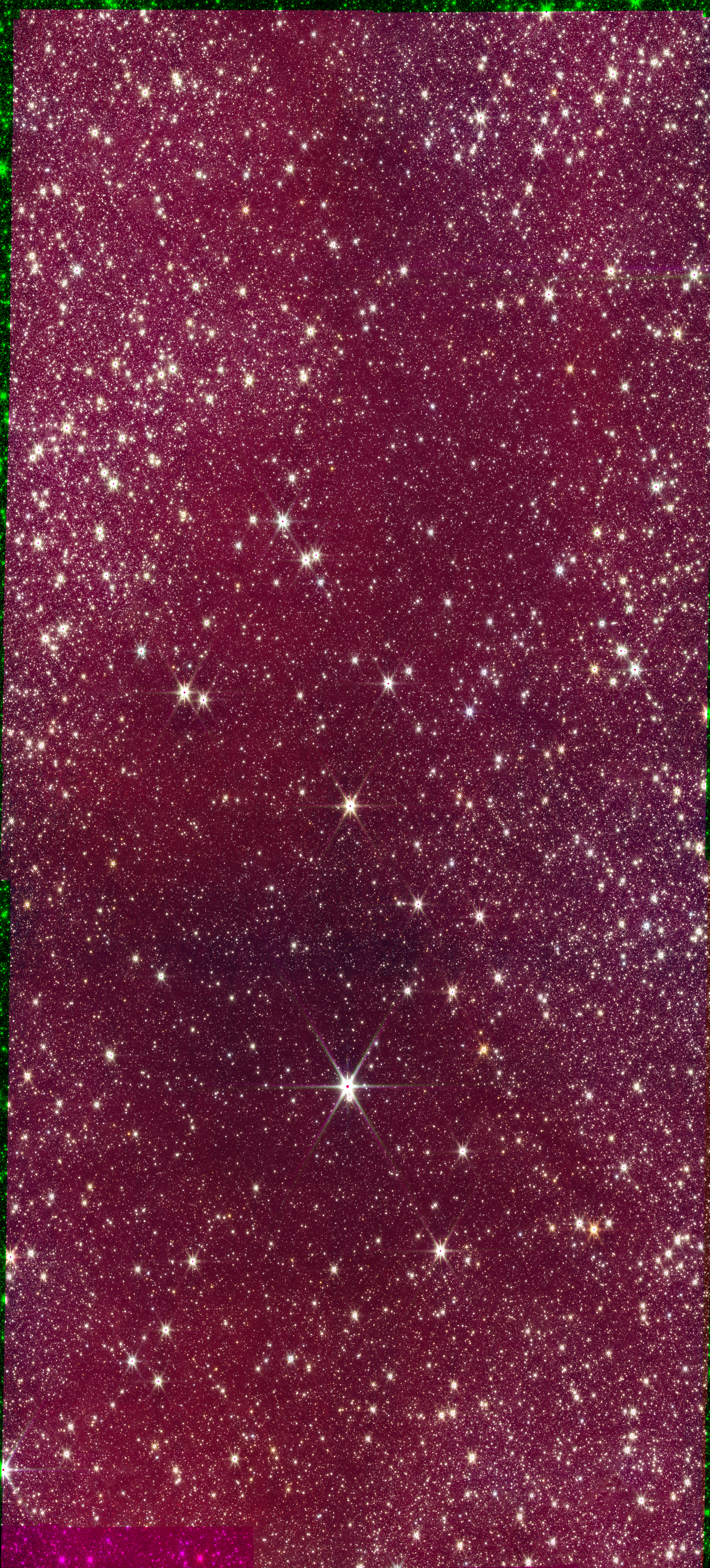
F212N F200W F182M

F356W F212N F200W
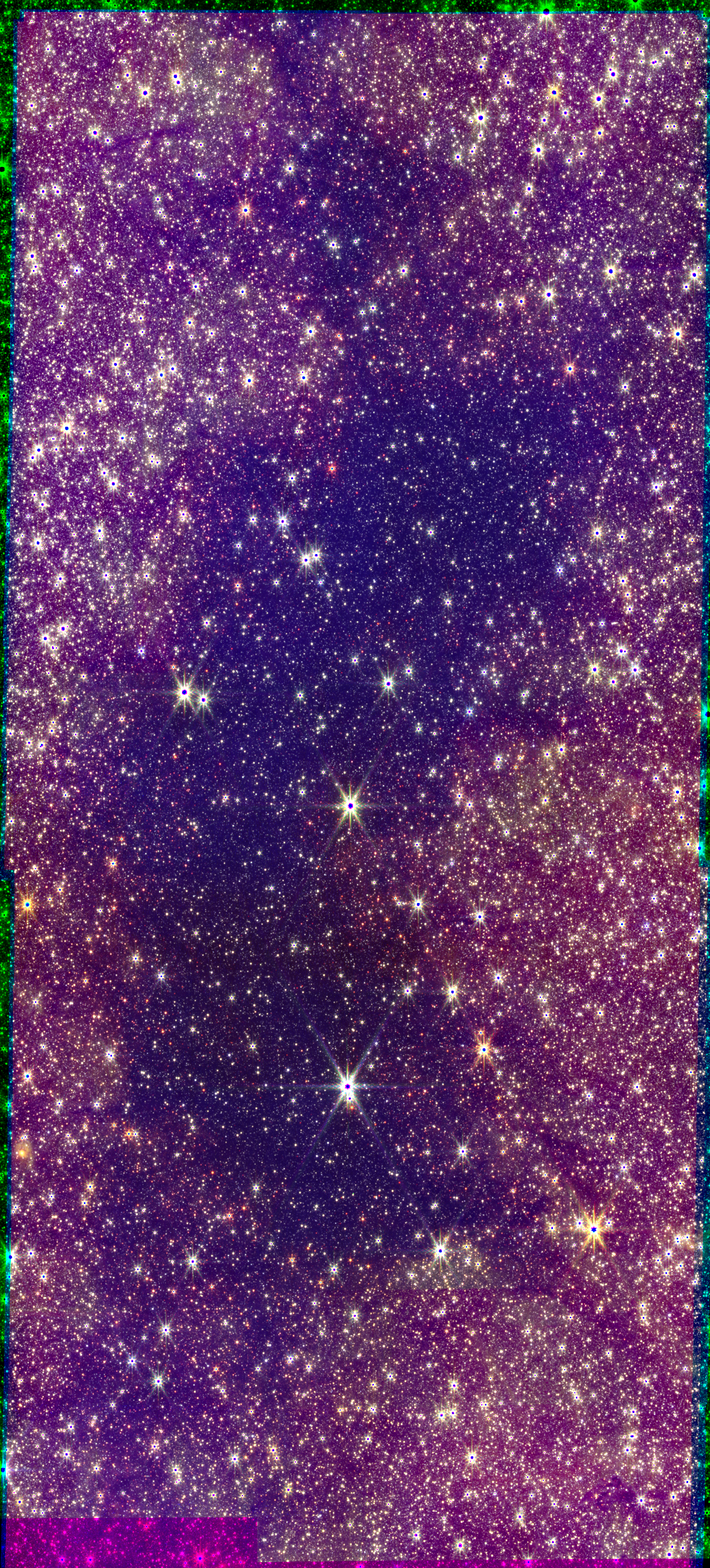
F410M F356W F212N
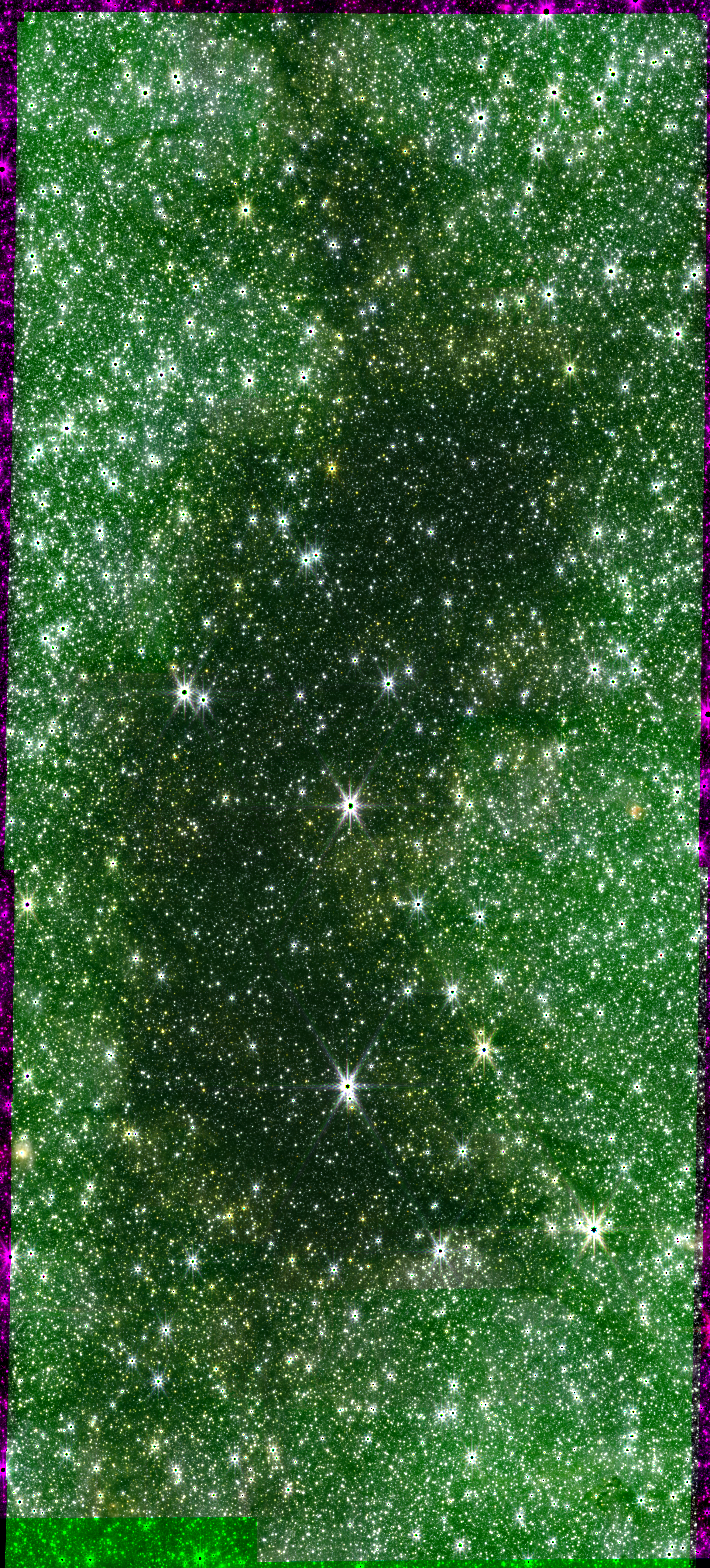
F444W F410M F356W
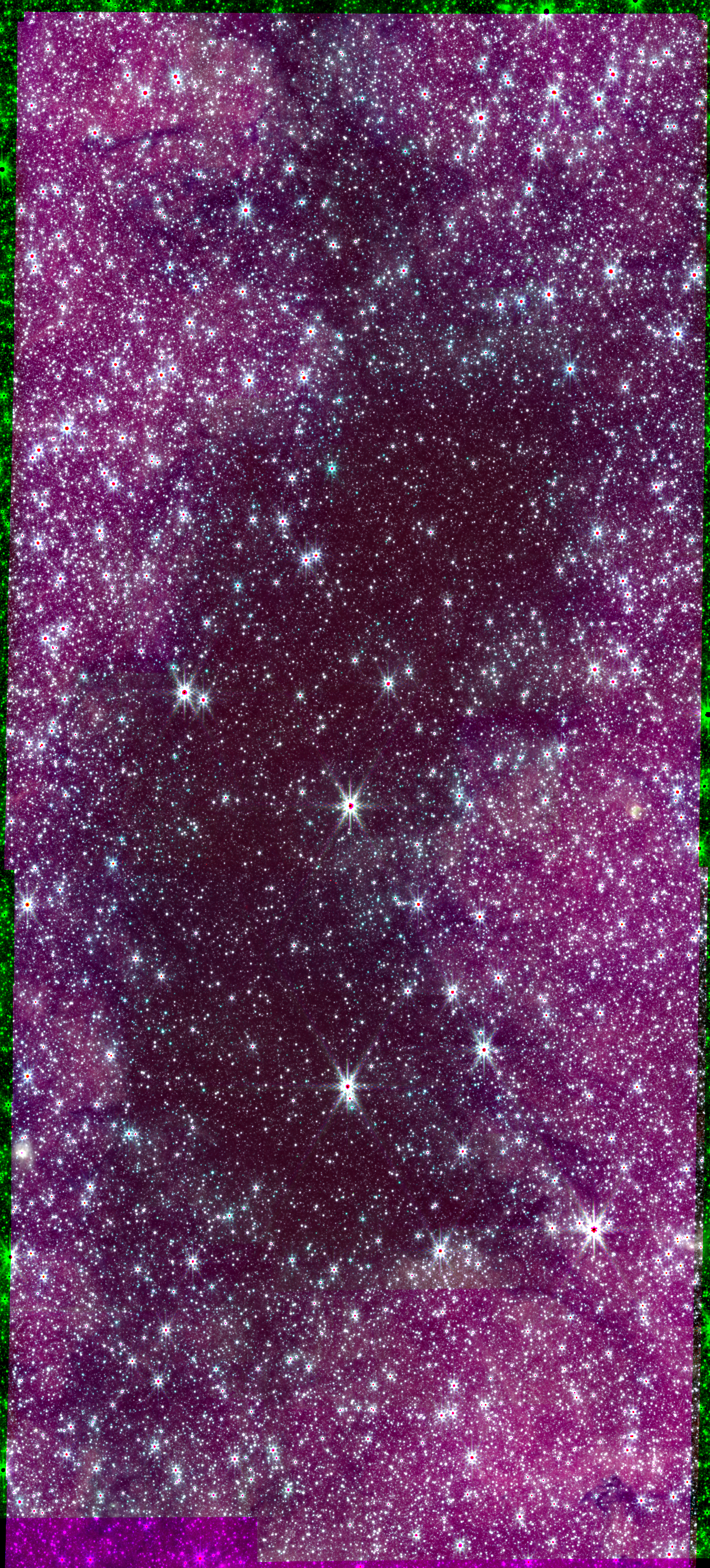
F466N F444W F410M


F466N
F405N
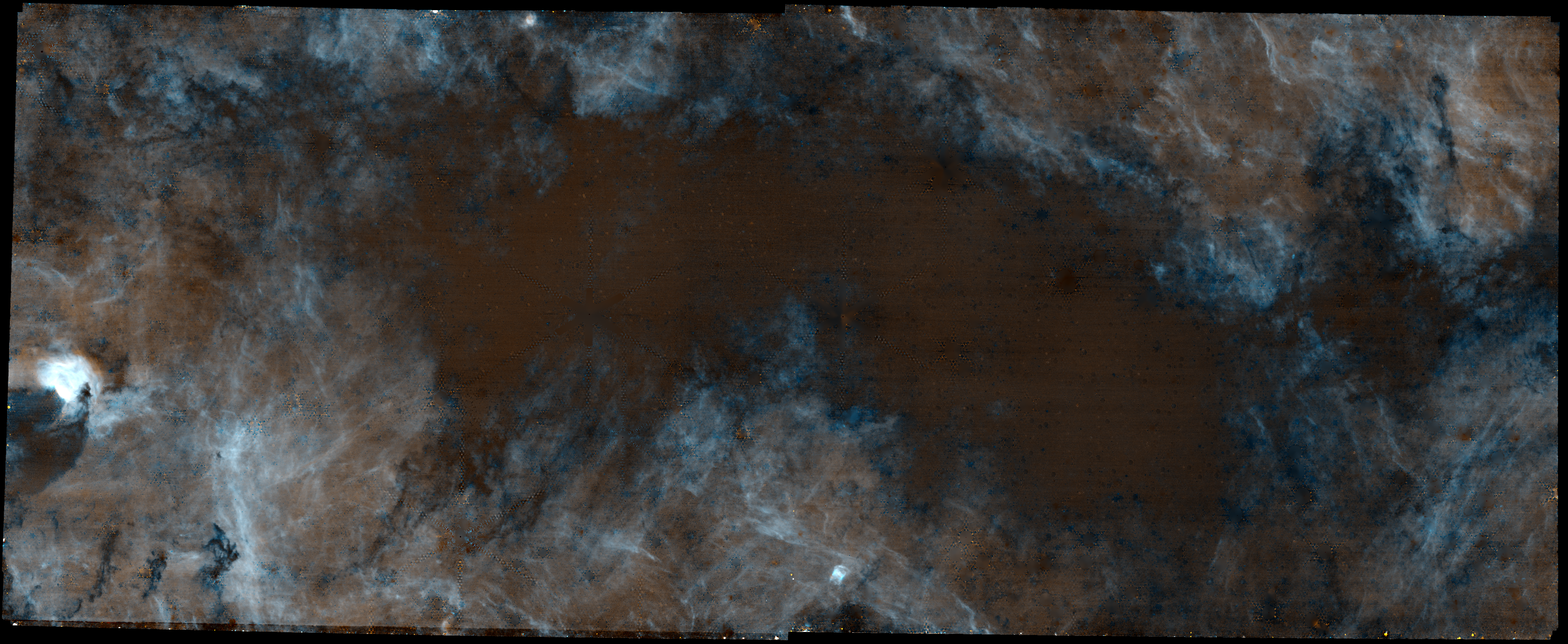

F466N
F405N


A4μm excess of 2-3 magnitudes at AV~60-90
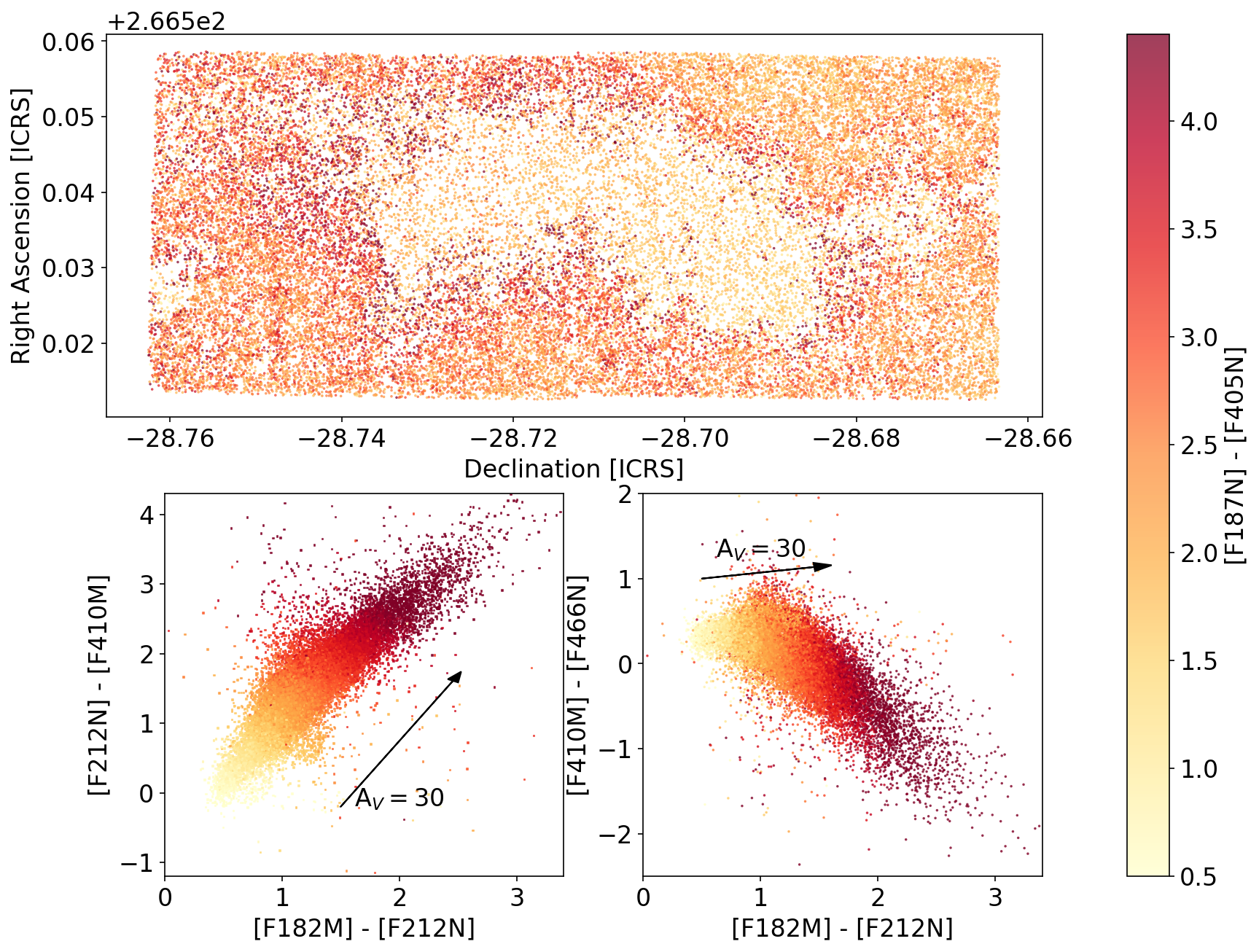
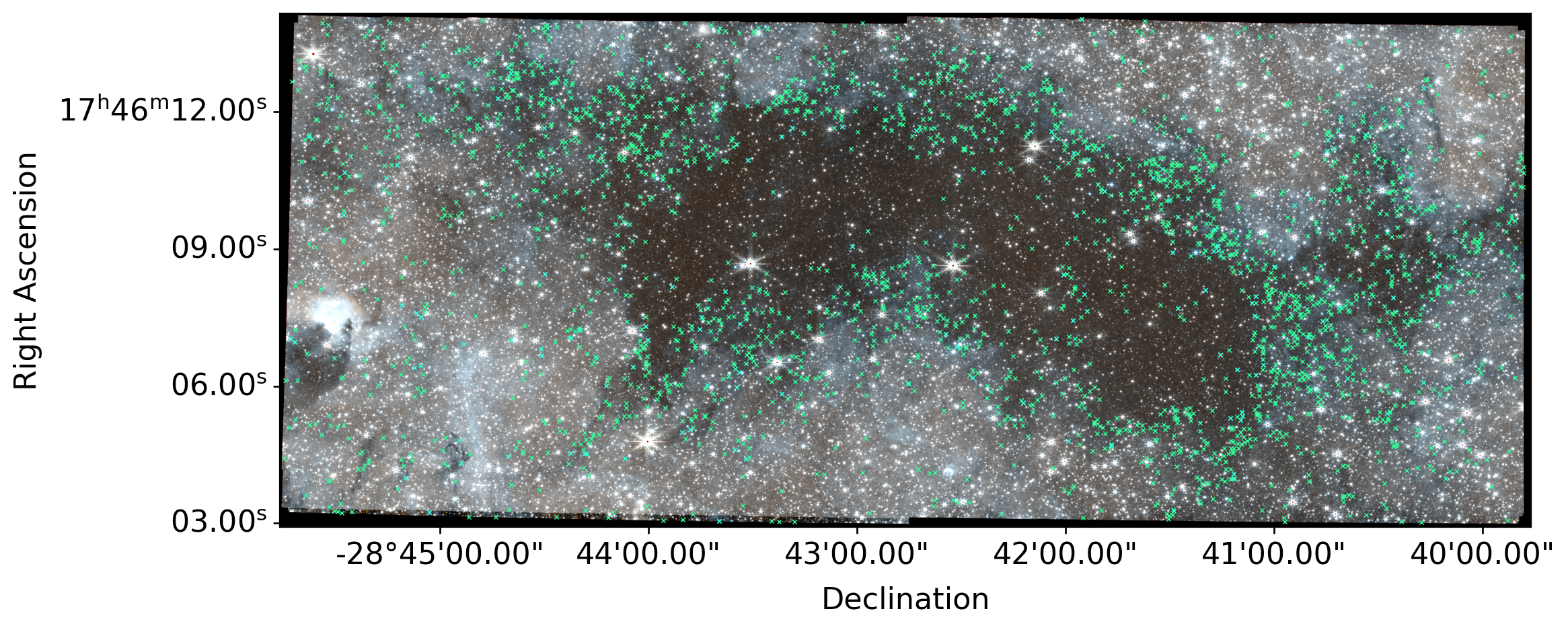
stars behind/within the center of the brick are too extincted to detect even at 4μm
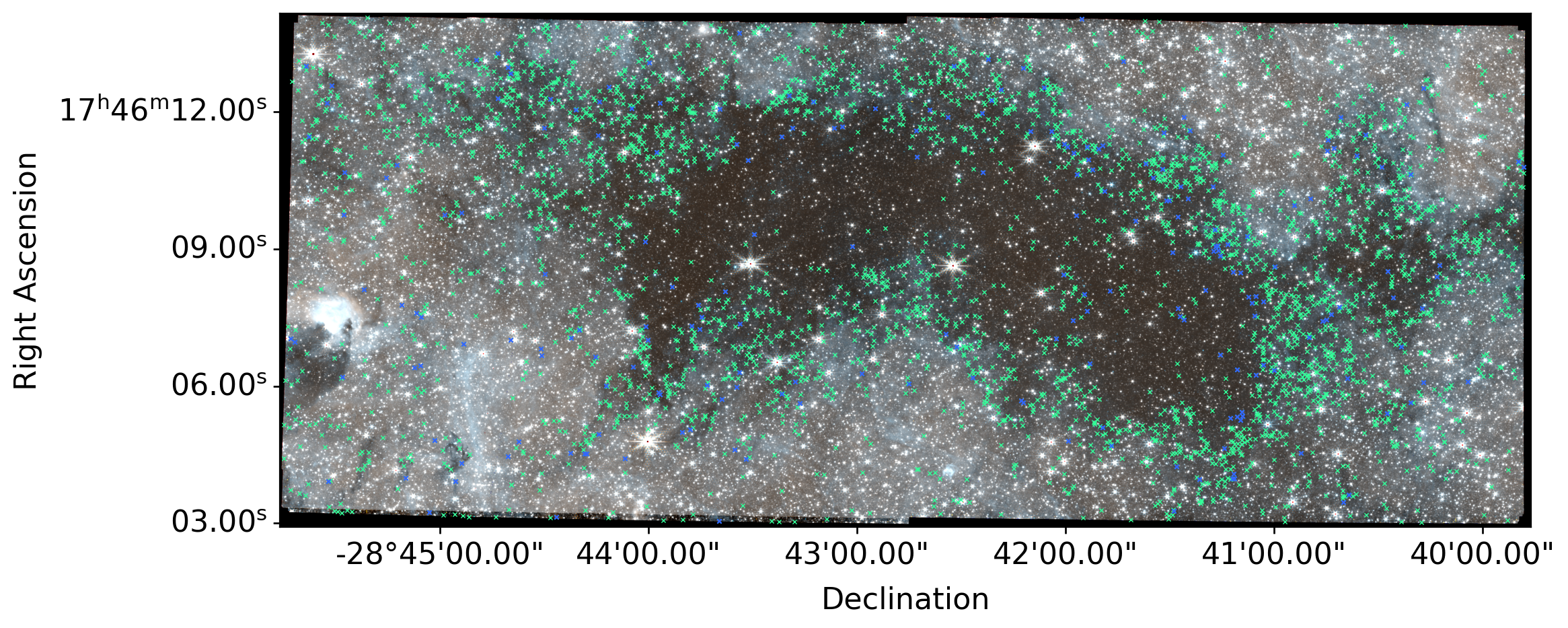
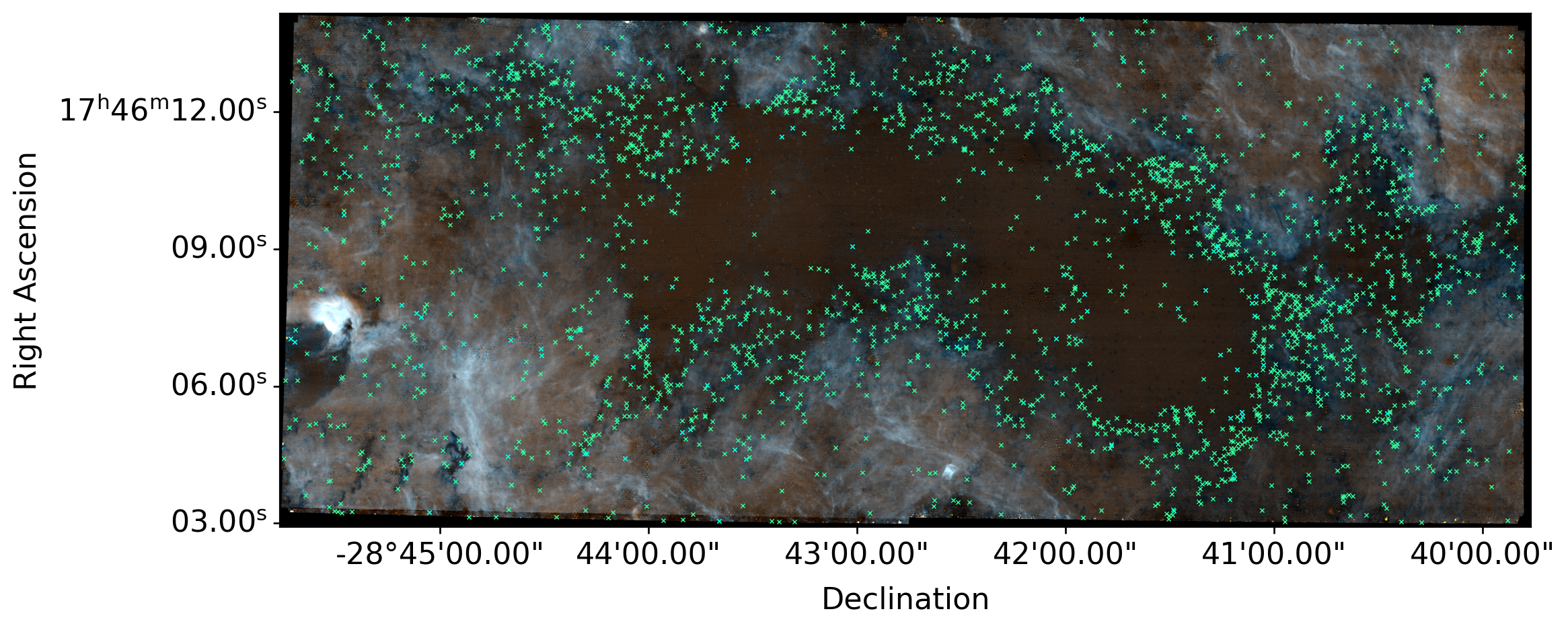
stars behind/within the center of the brick are too extincted to detect even at 4μm

Gas emission pointed toward freezeout already
(e.g., Rathborne+ "Baked Alaska": a frozen interior)
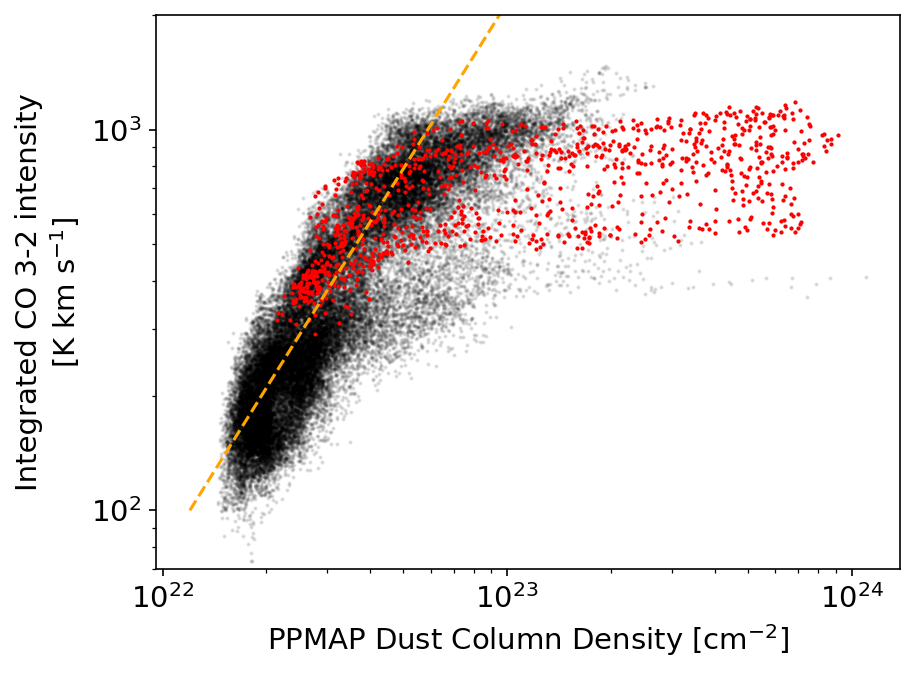
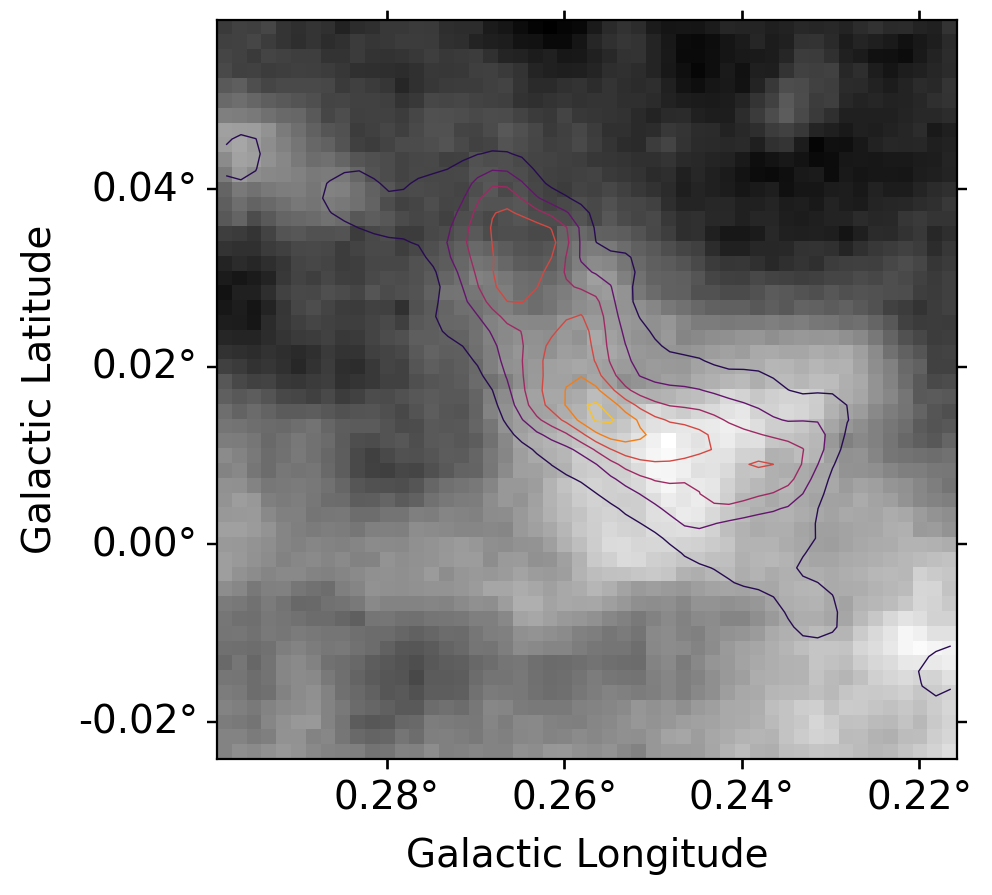
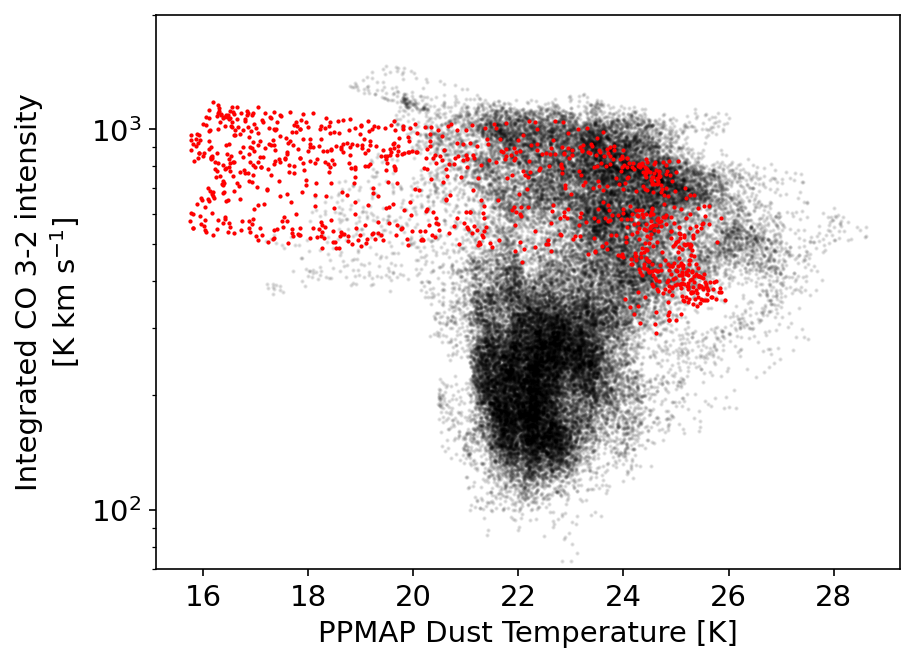
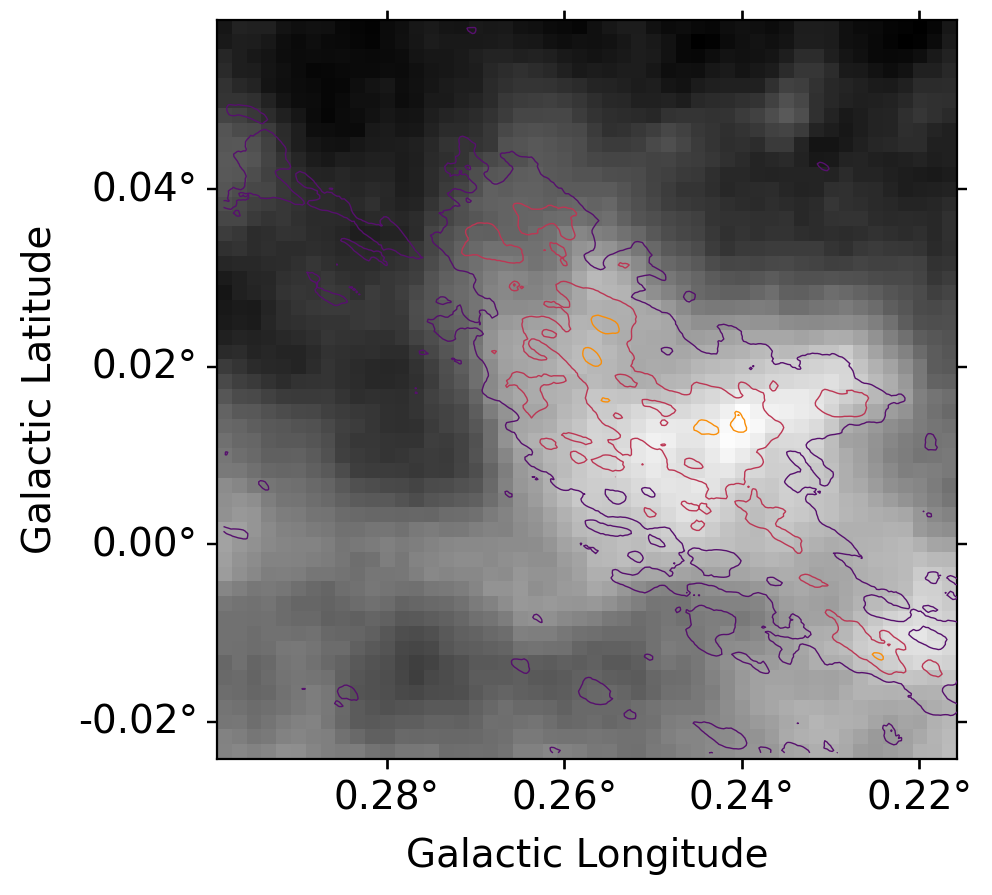

Tgas > Tdust. Gas is heated by CRs & turbulence

At high CRIR, CO fails as a coolant because
But, The Brick is a really weak emitter in C+
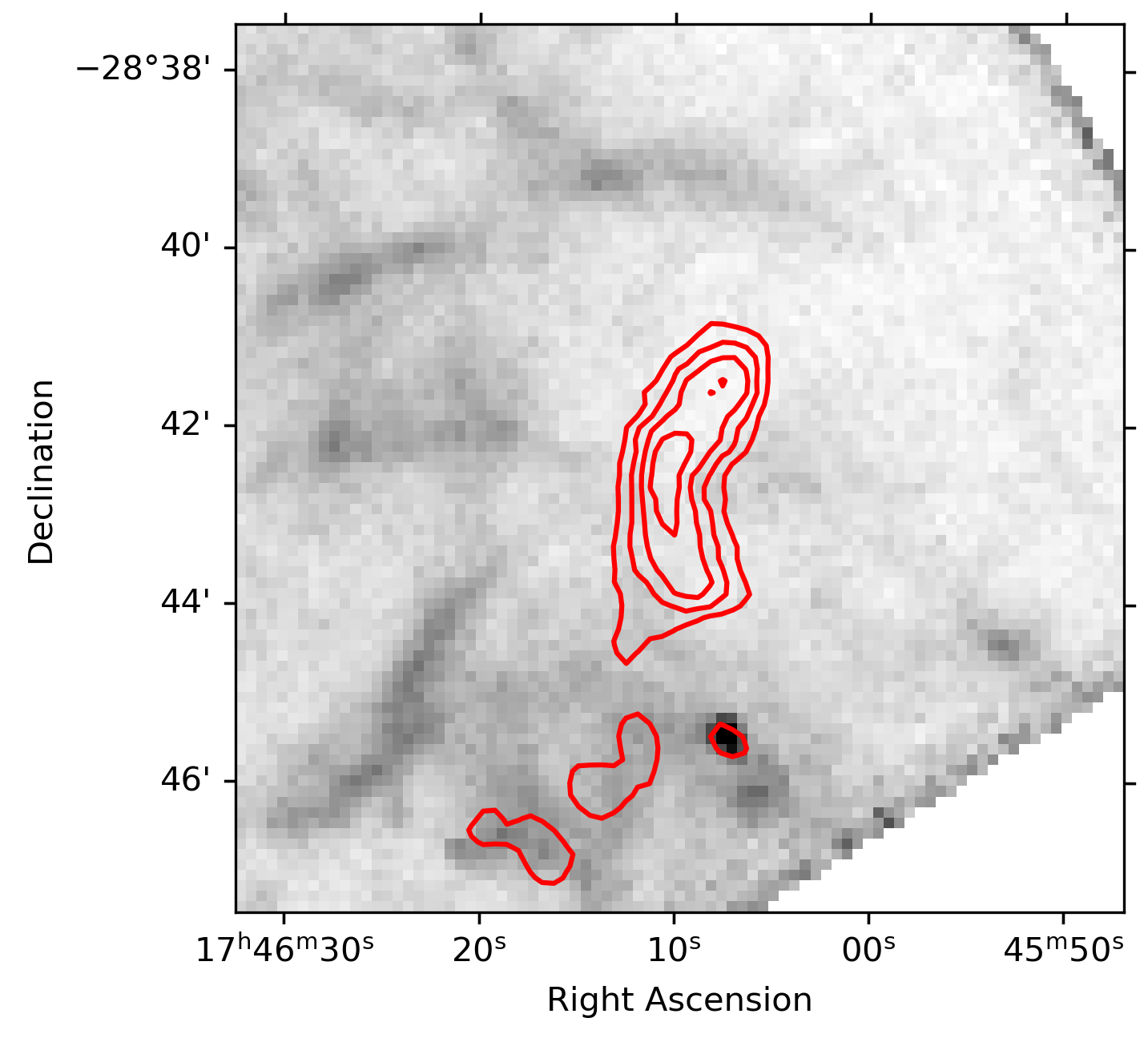
CO + He+ → C+ + O + HeBut, The Brick is a really weak emitter in C+

CO is limited as a coolant, but because of freezeout, not (just) CRs
No, not yet.
Brα and Paα excess sources exist, but they're uniformly distributed - not likely to be associated with star formation.
(P08 Rebecca Houghton - similar result)

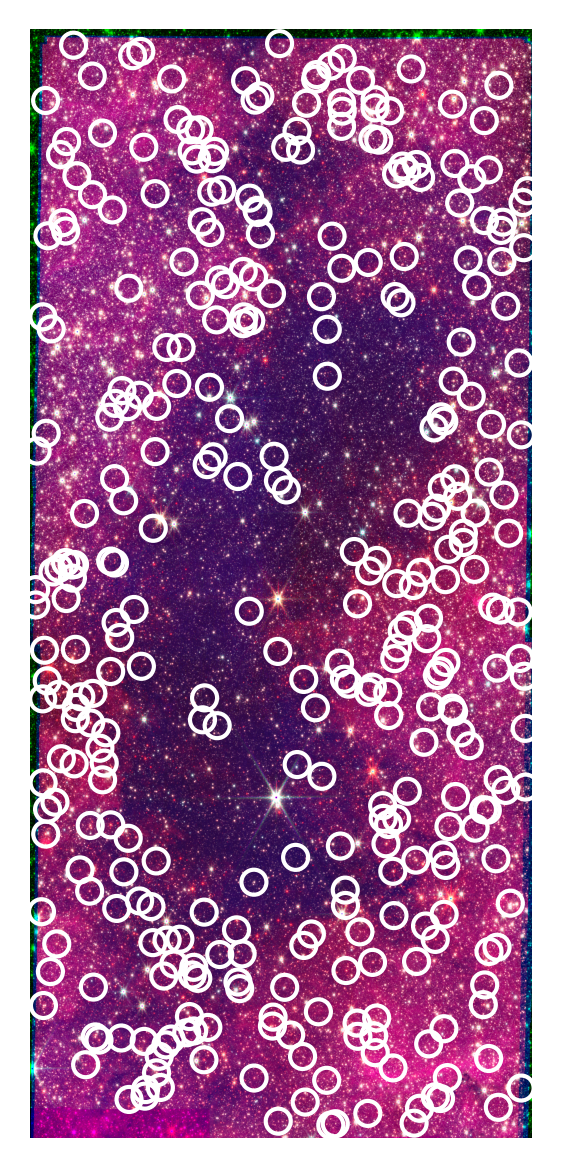
- The Brick is (nearly) protostarless
- Ice forms very readily in the GC environment
- Early freezeout, in addition to CRs, may limit gas cooling

Ge21 Does the formation and destruction of molecular ices play any role in the early SF process?
